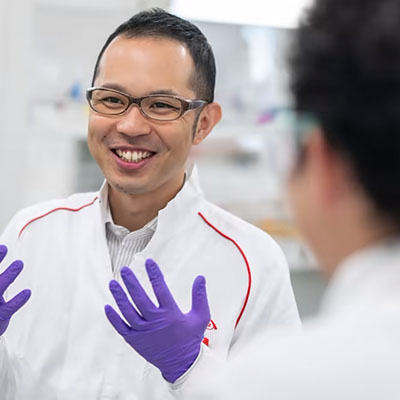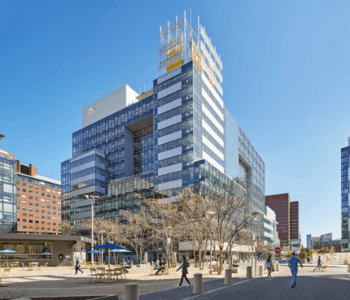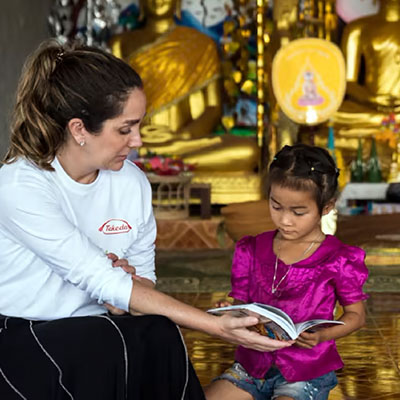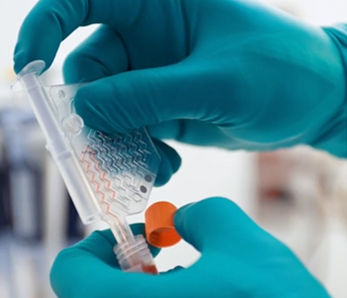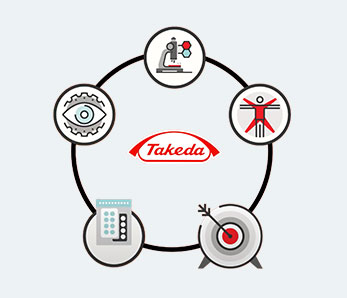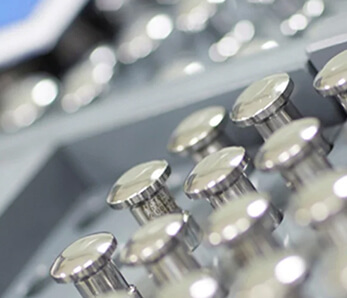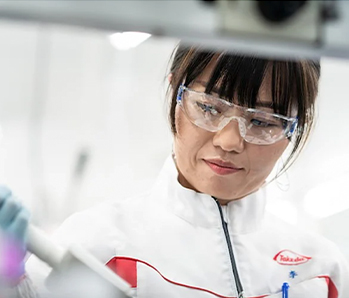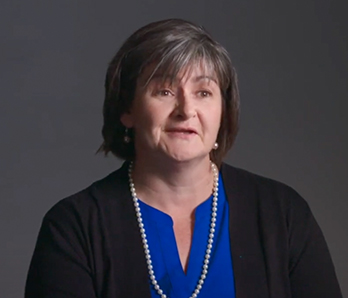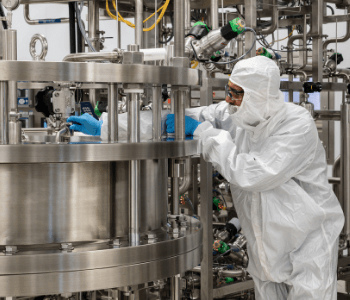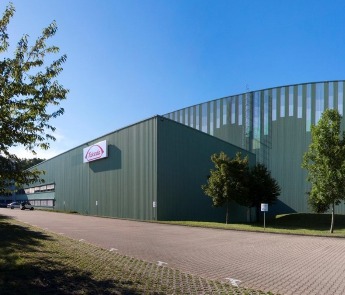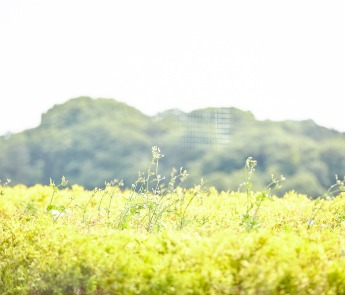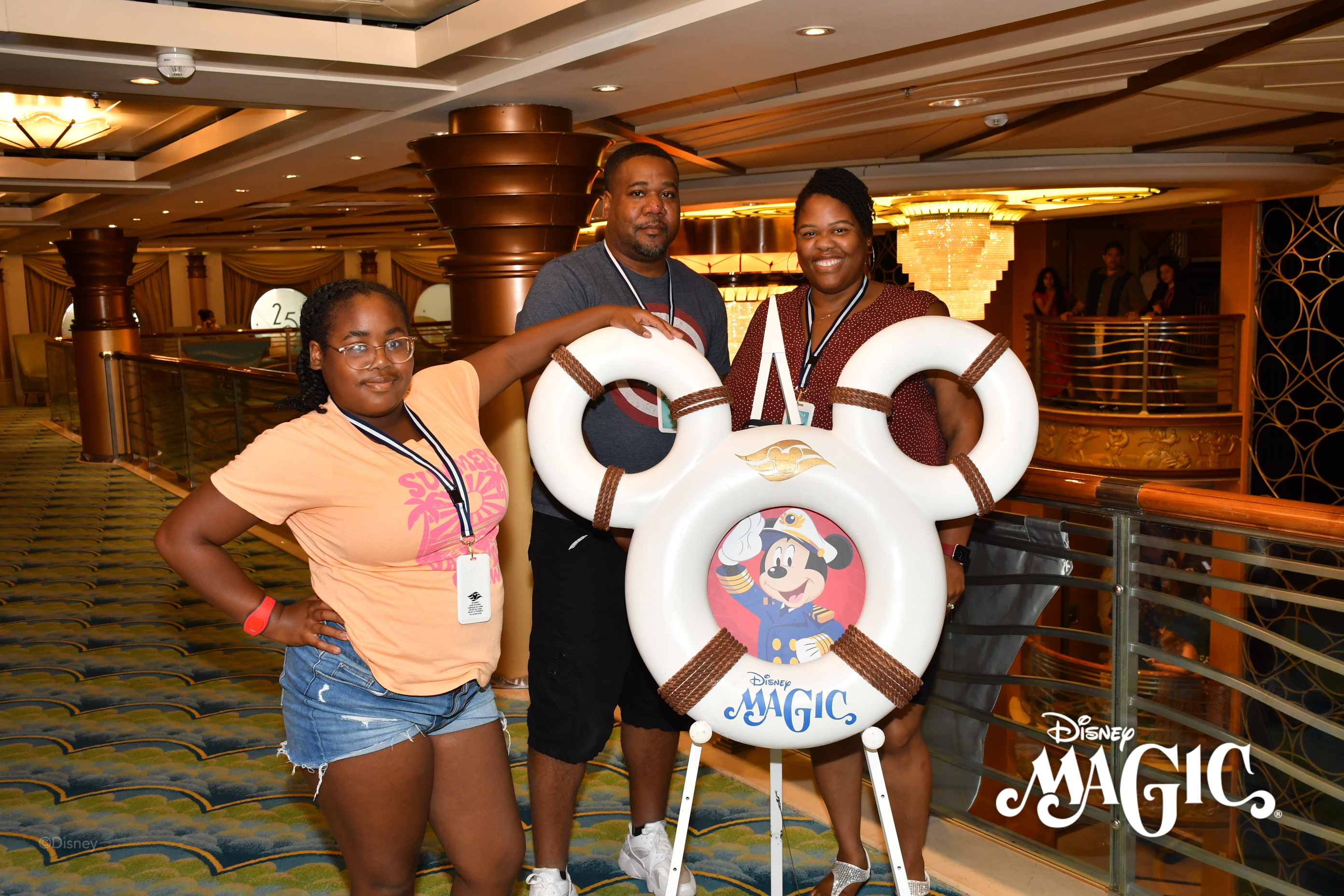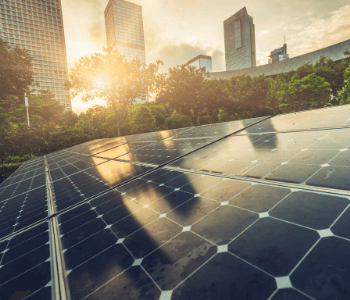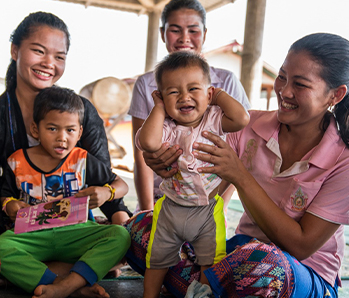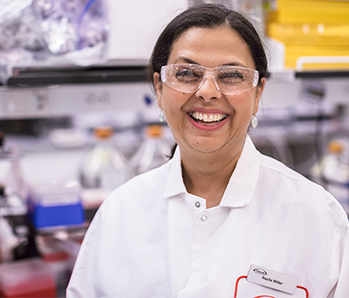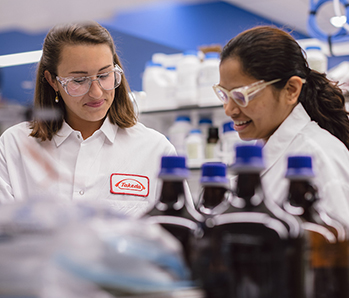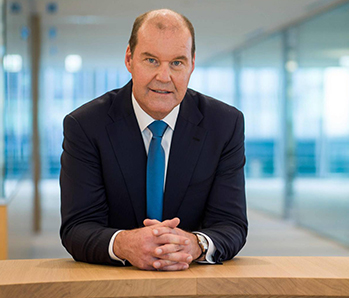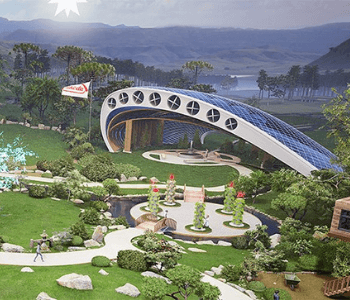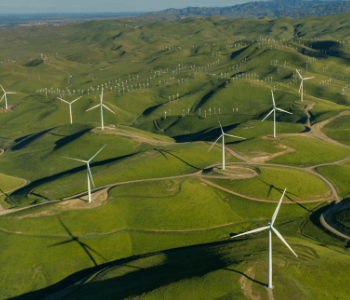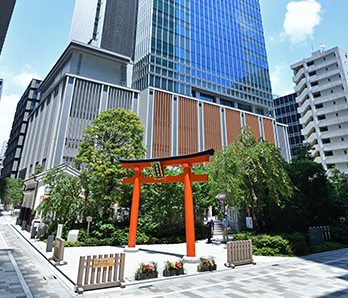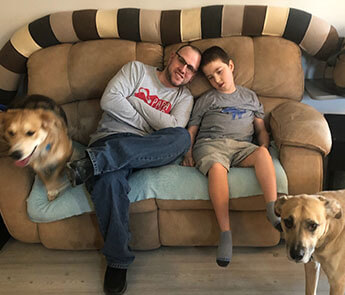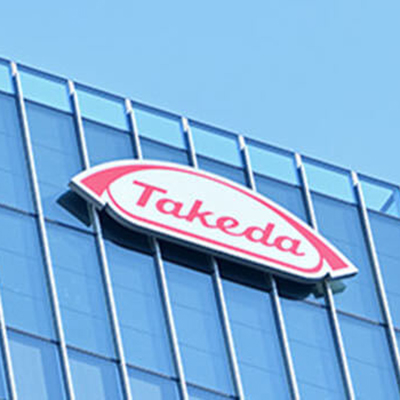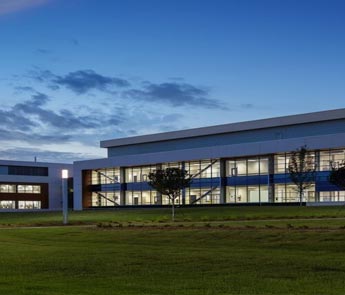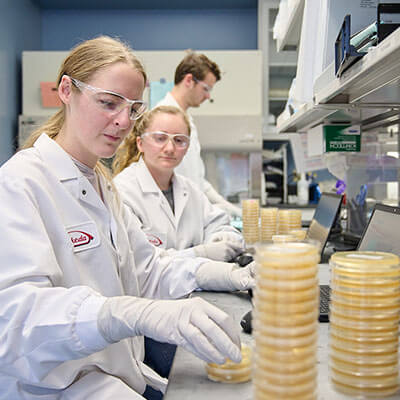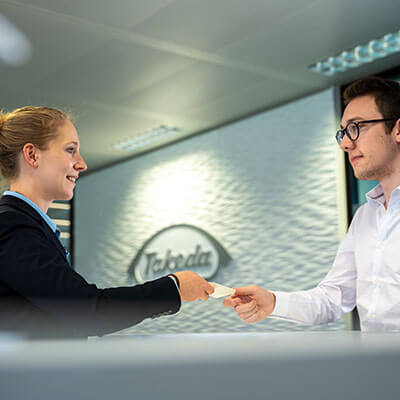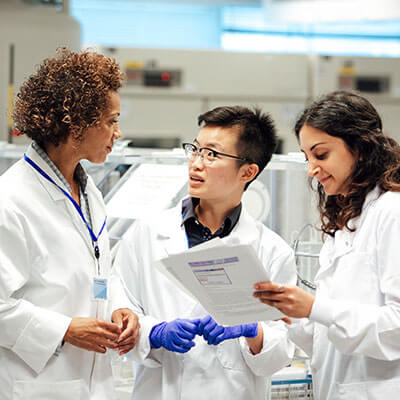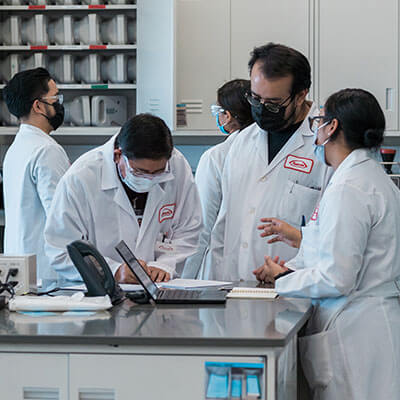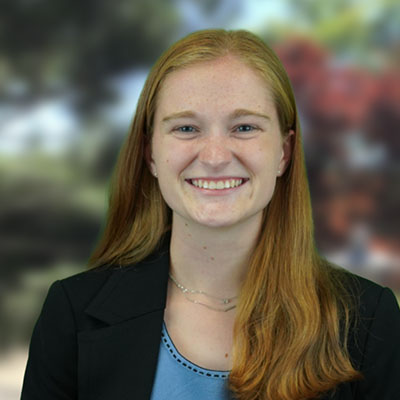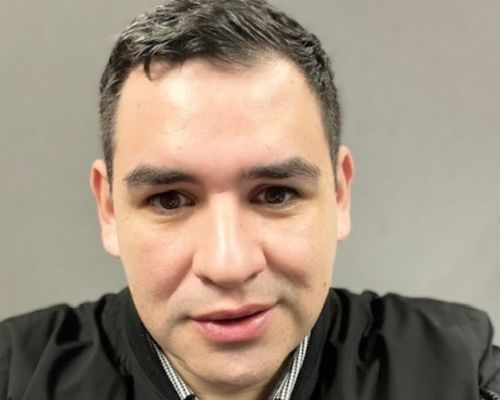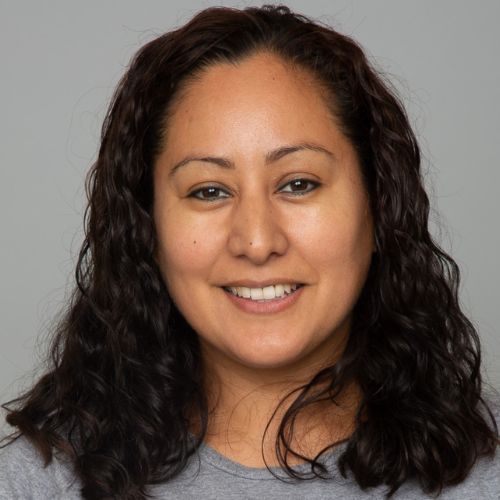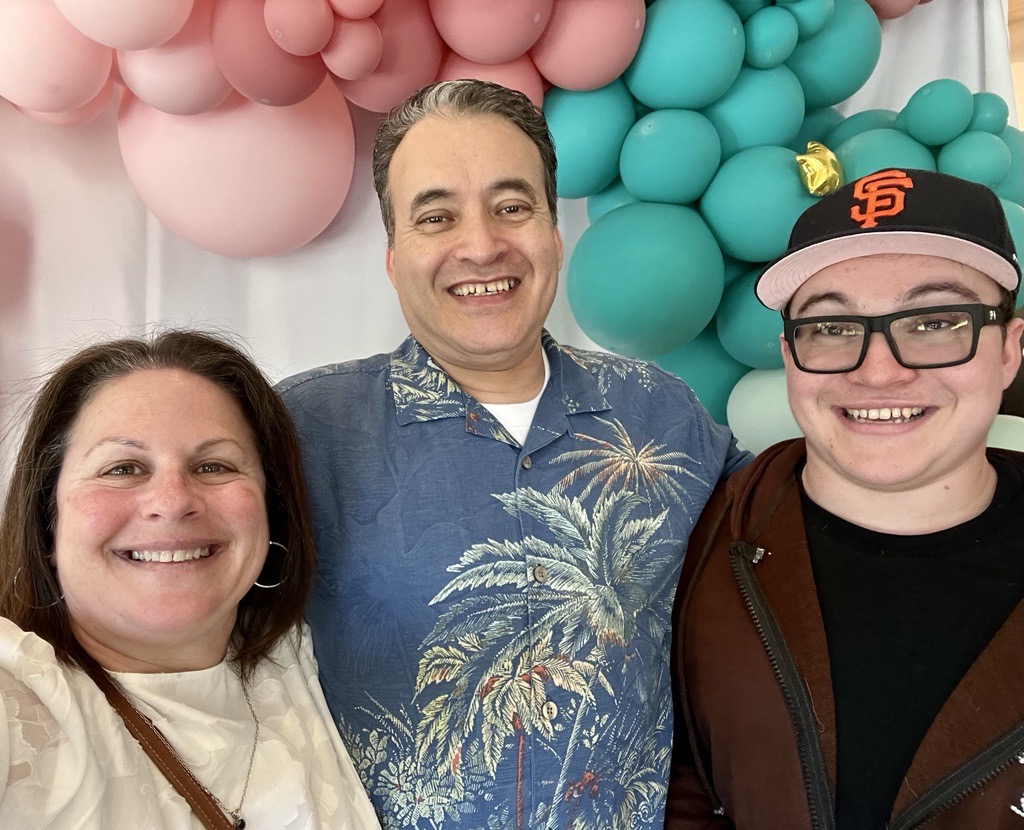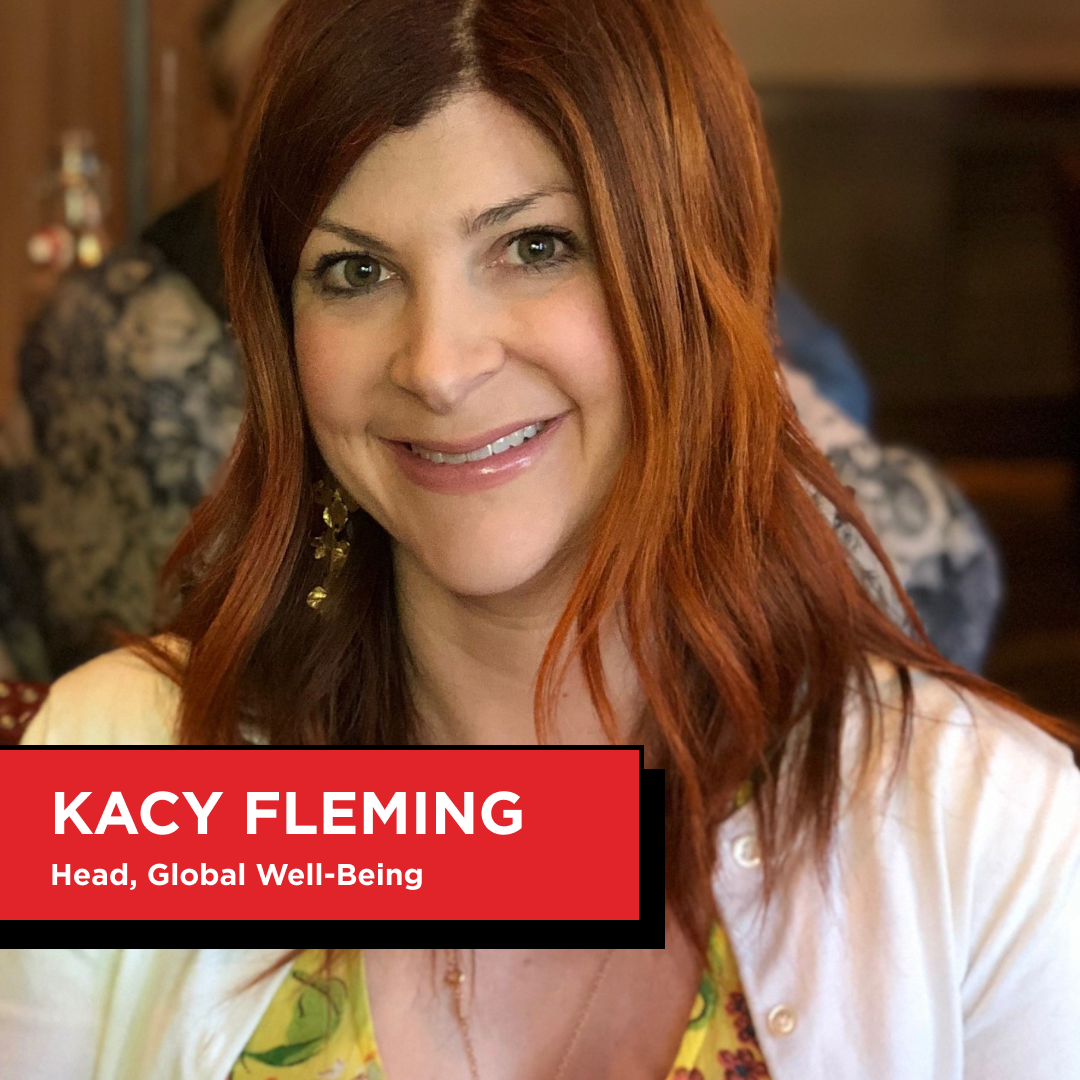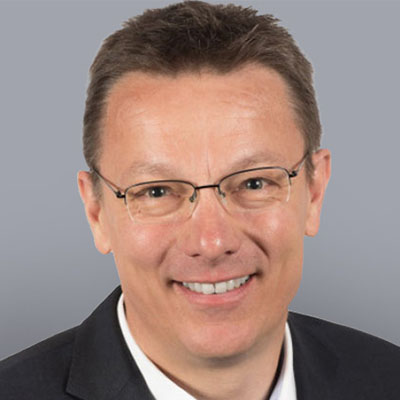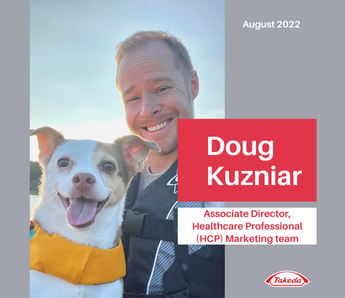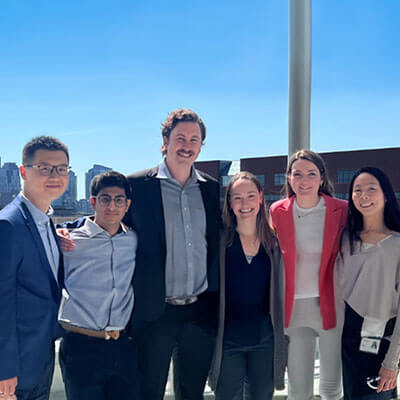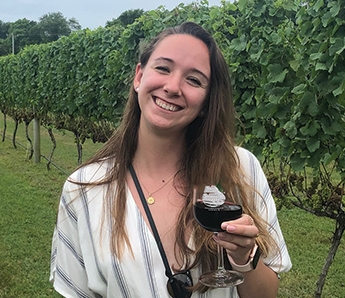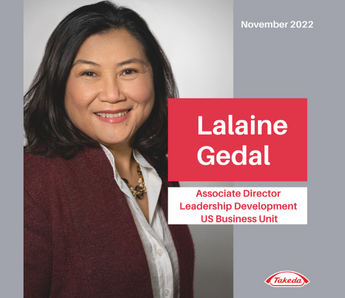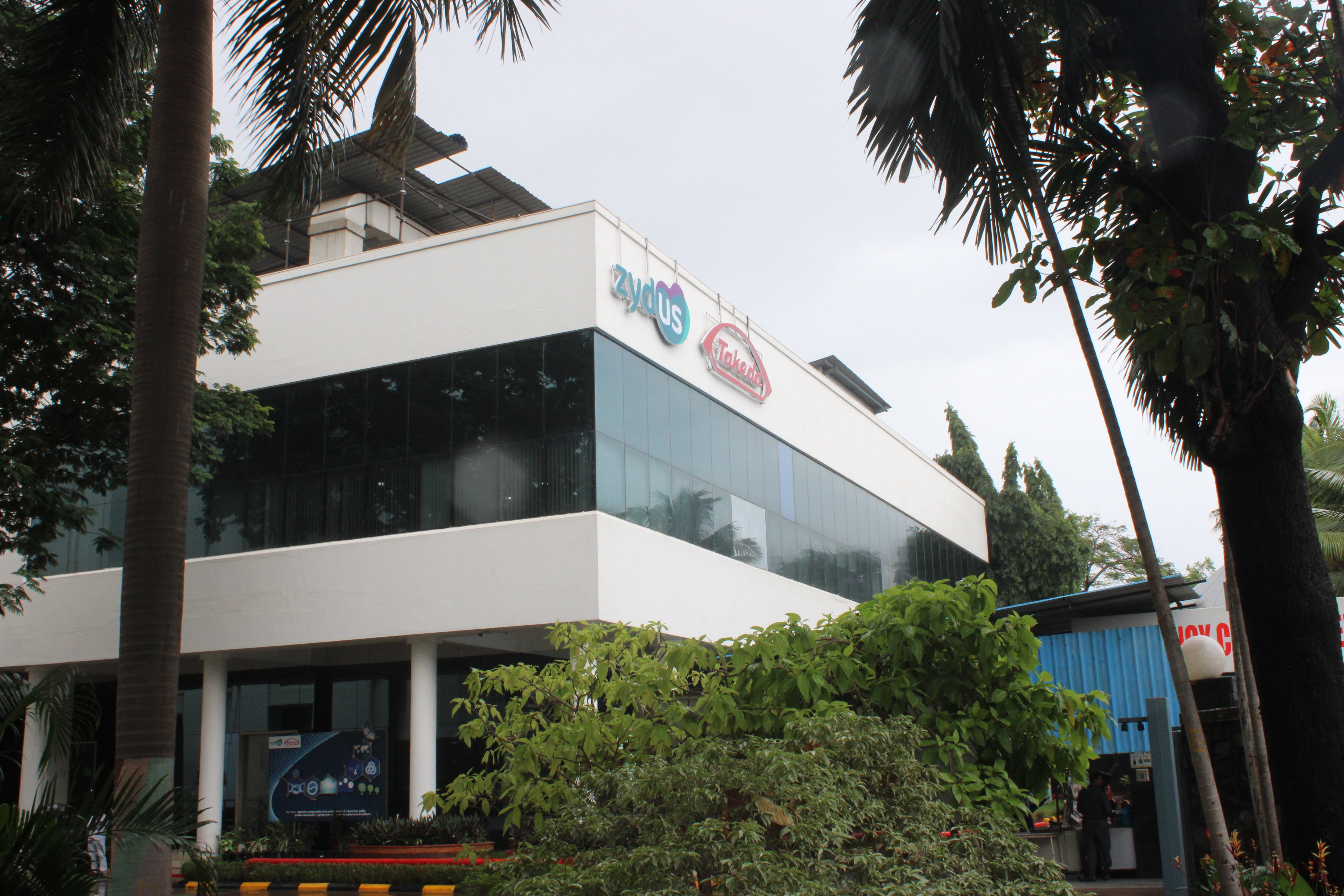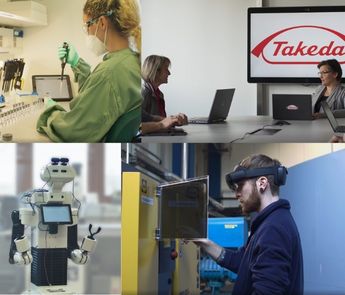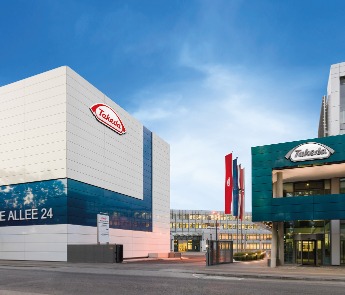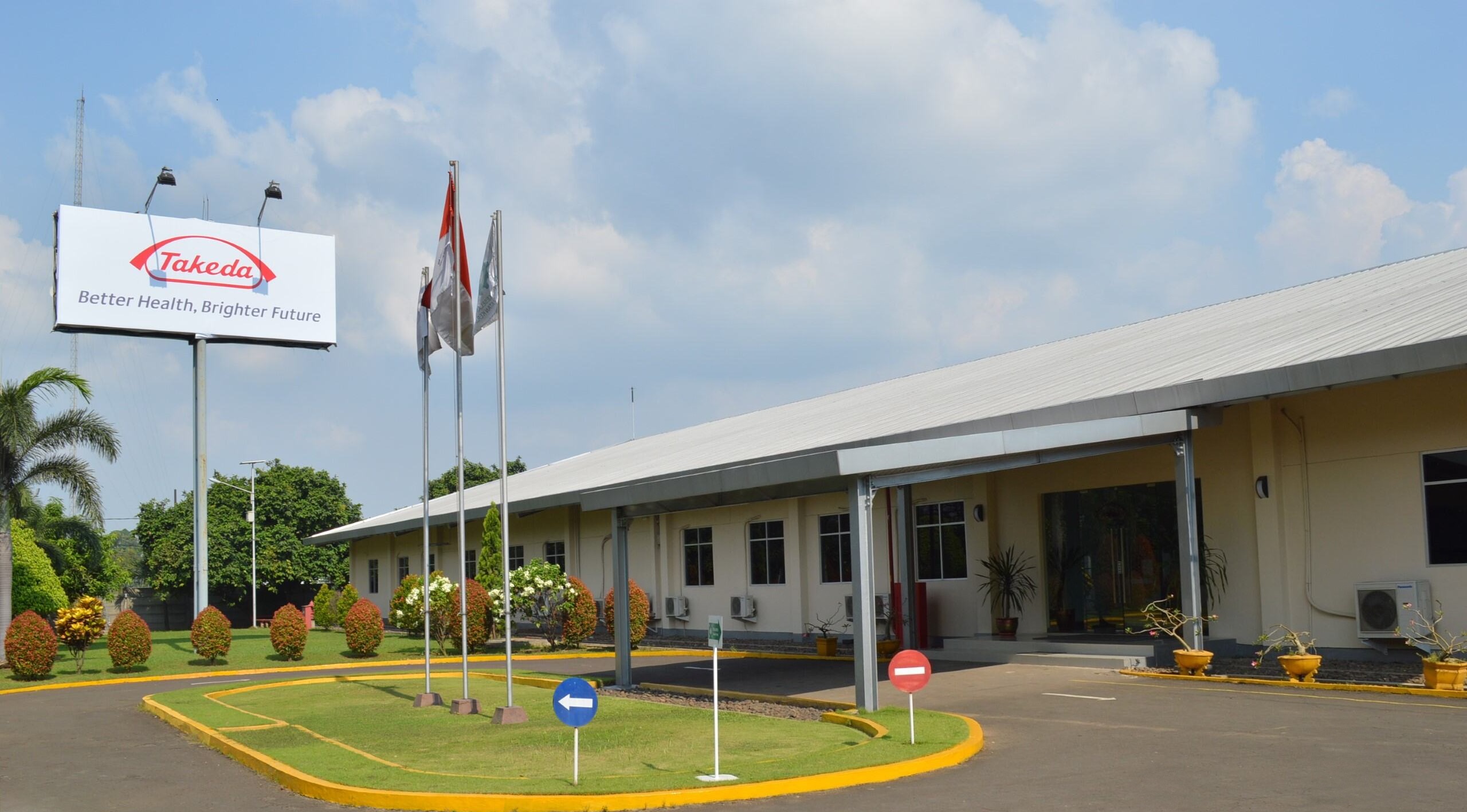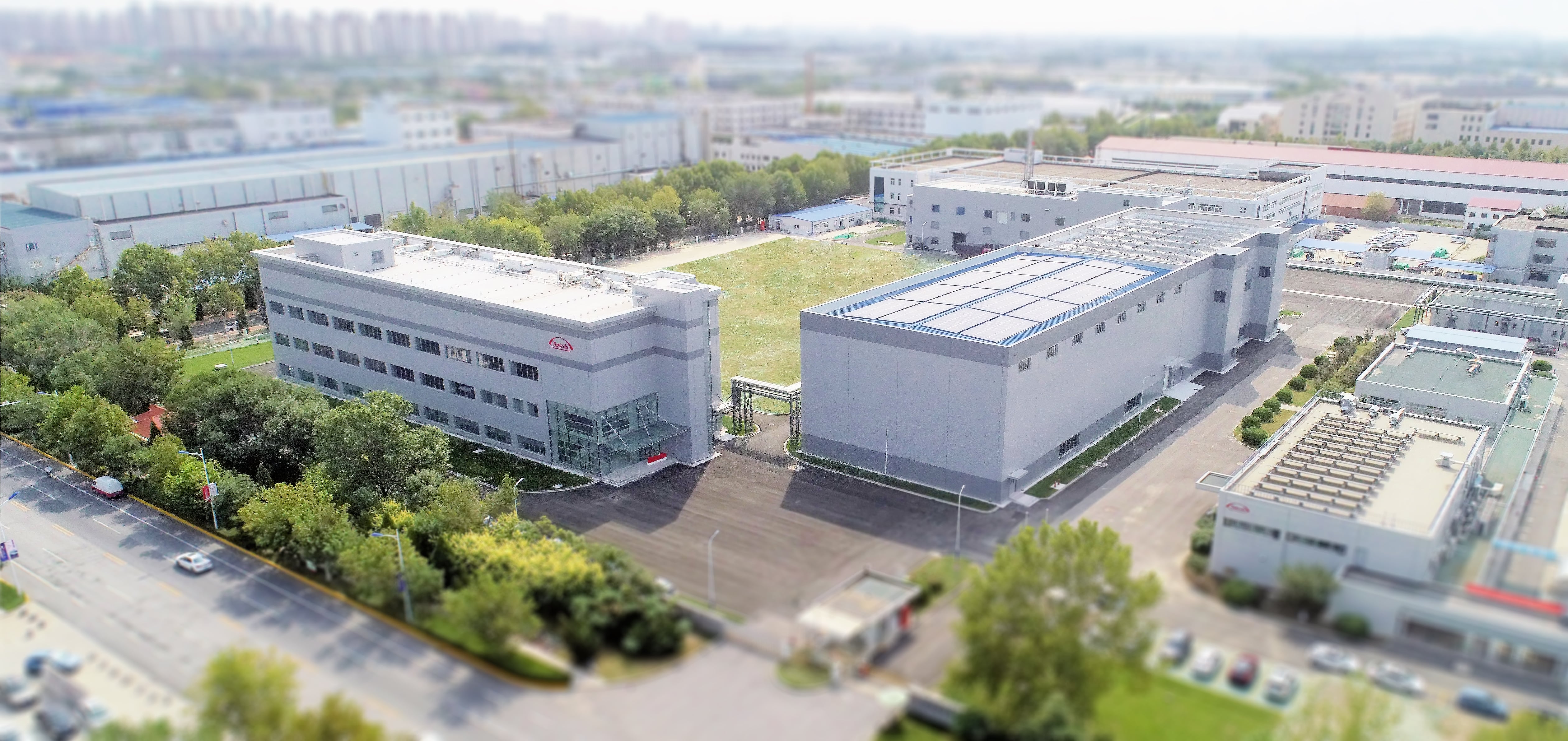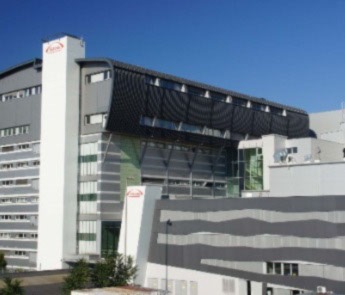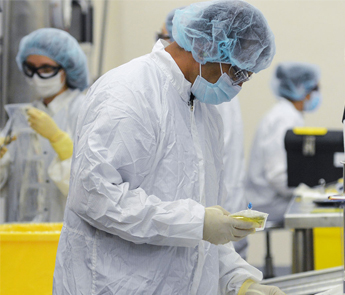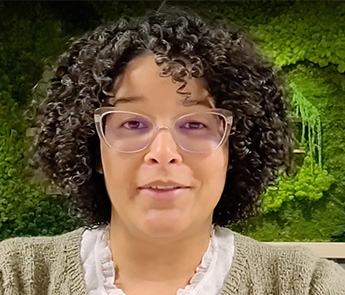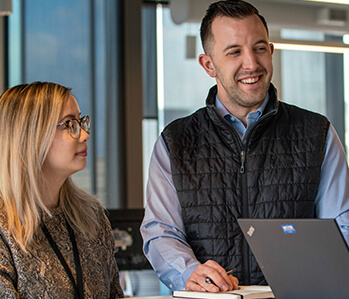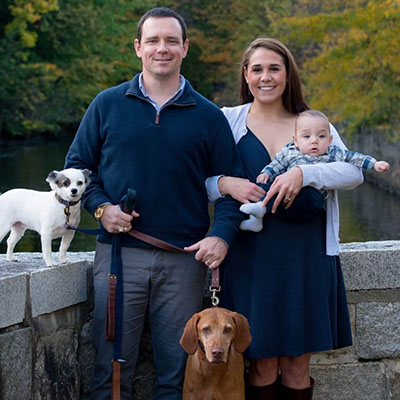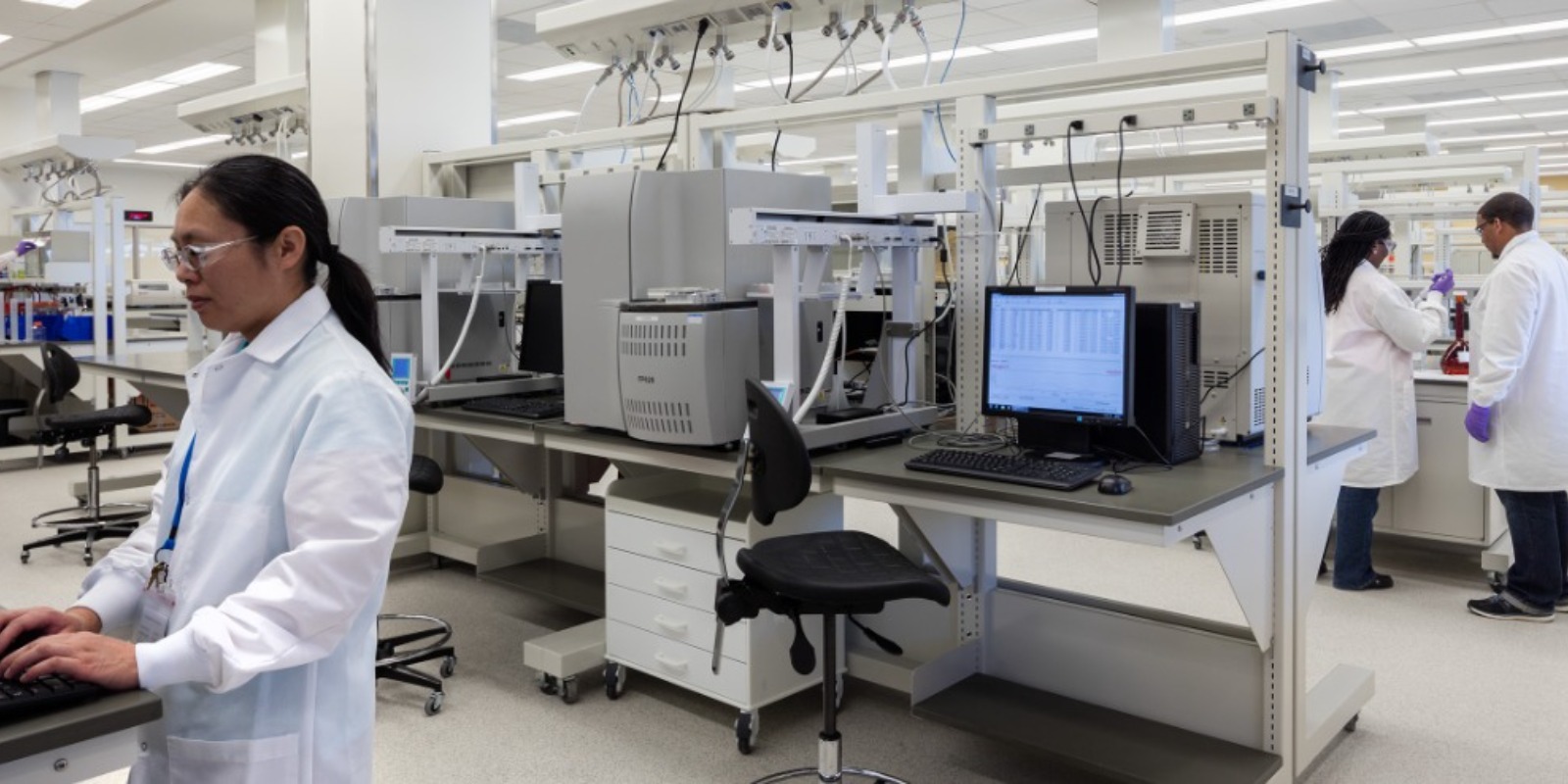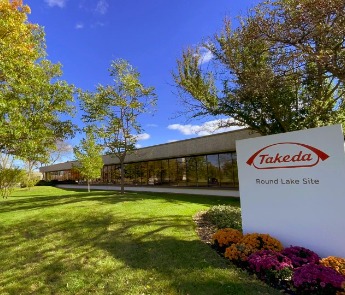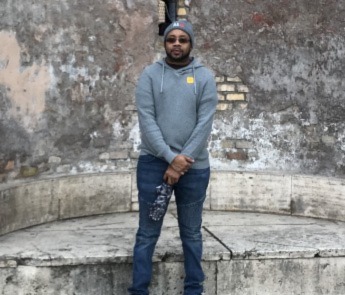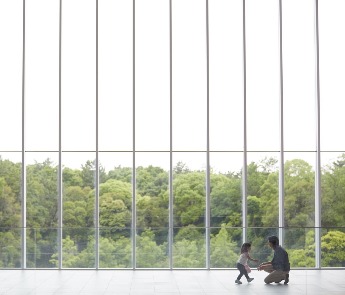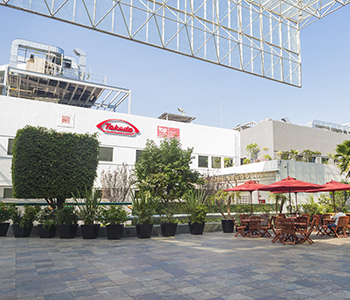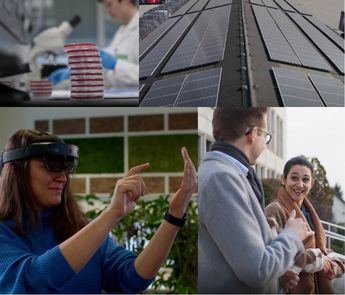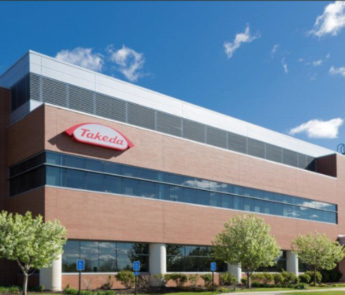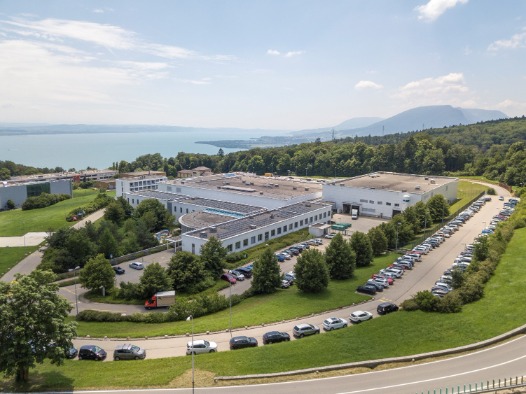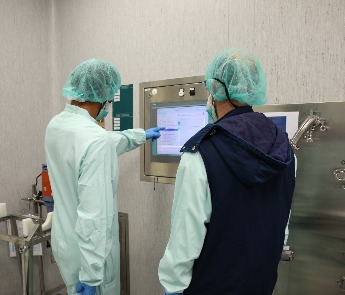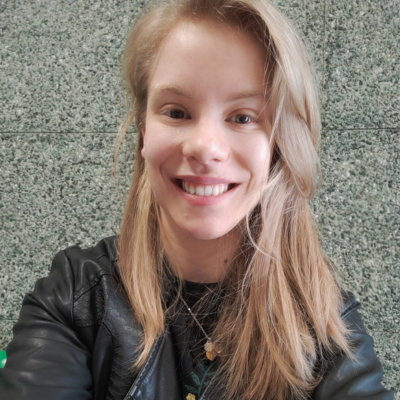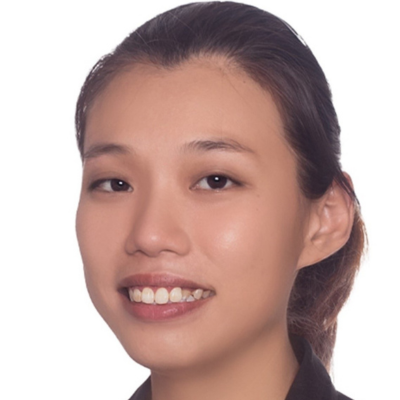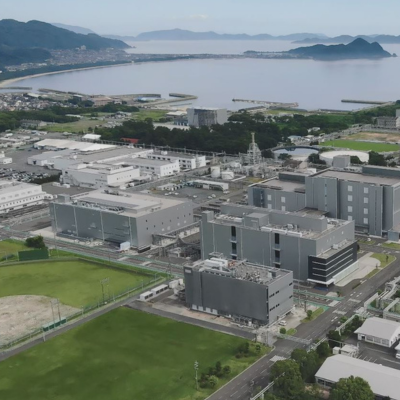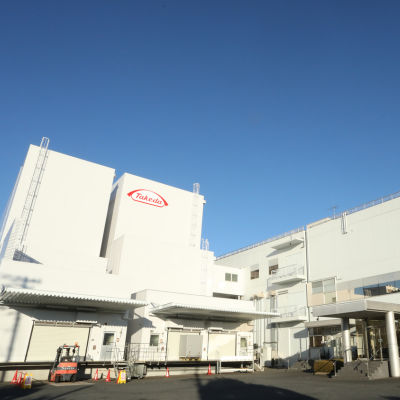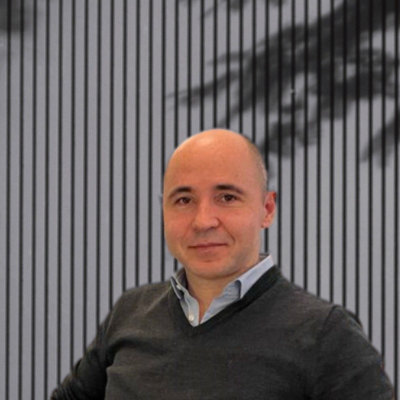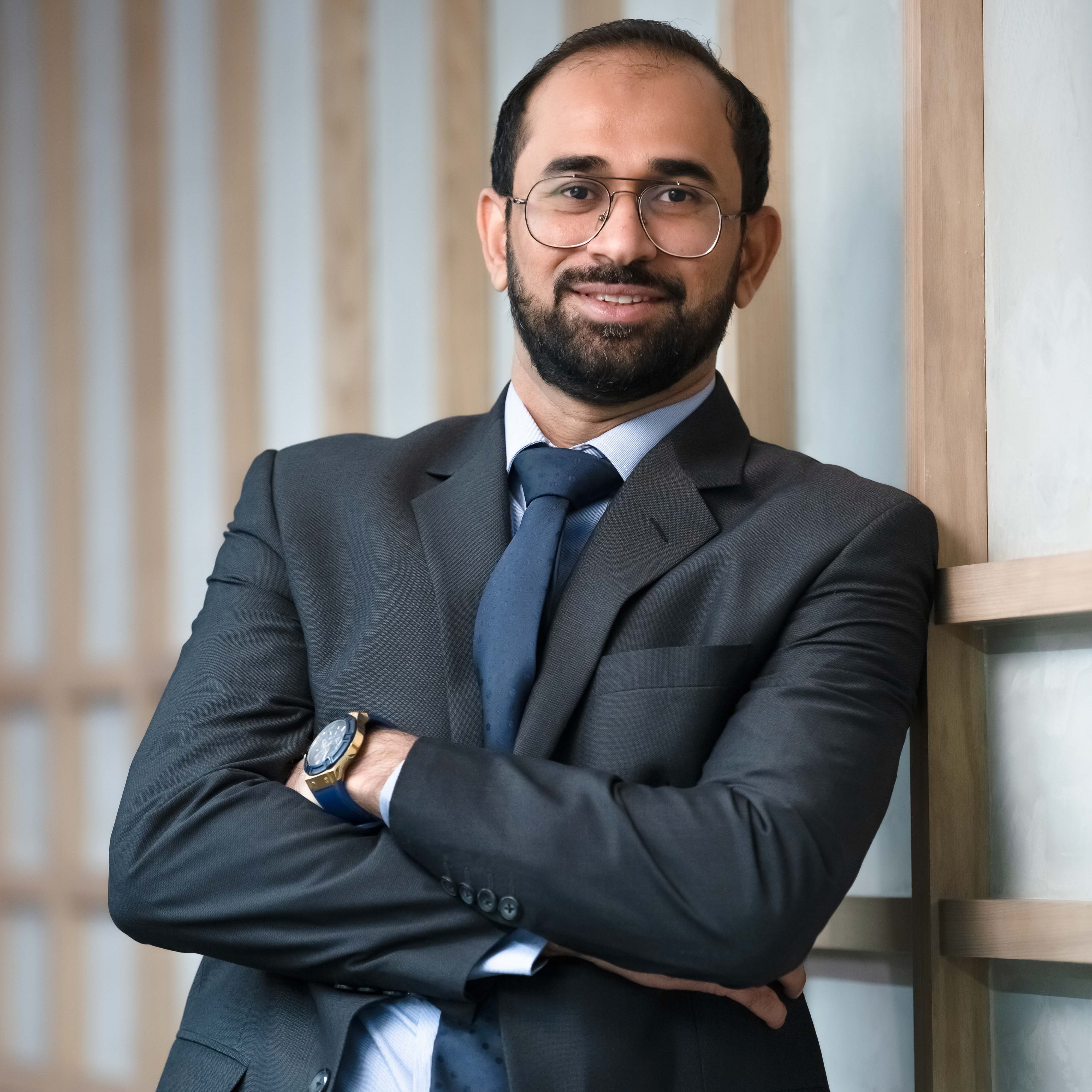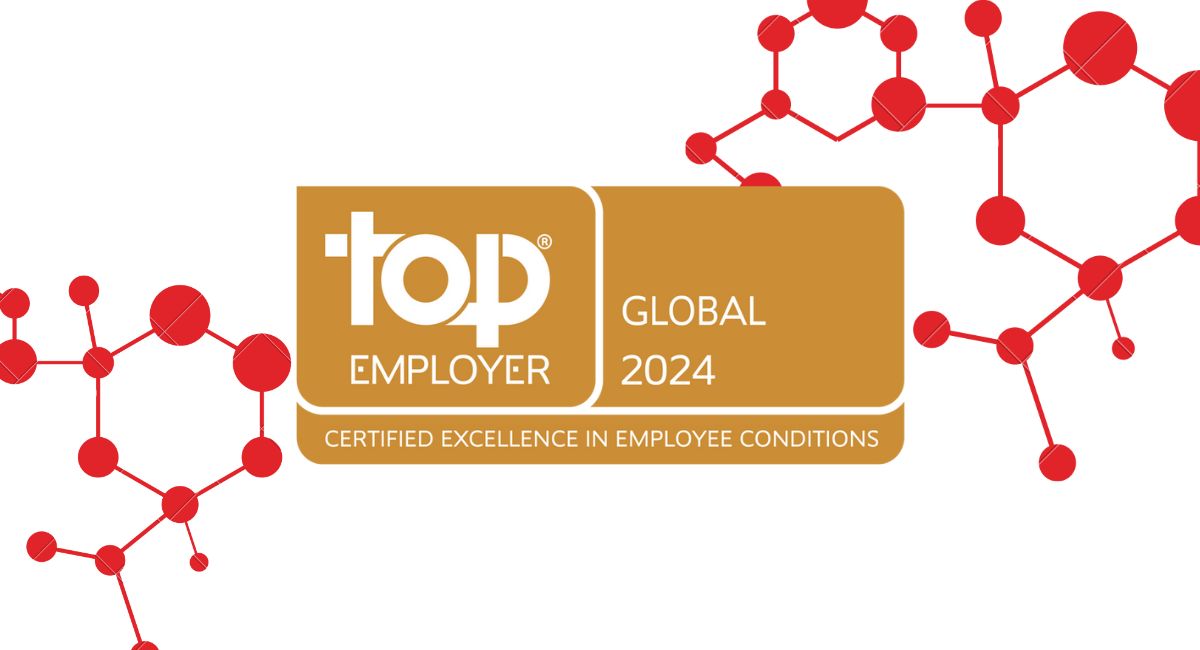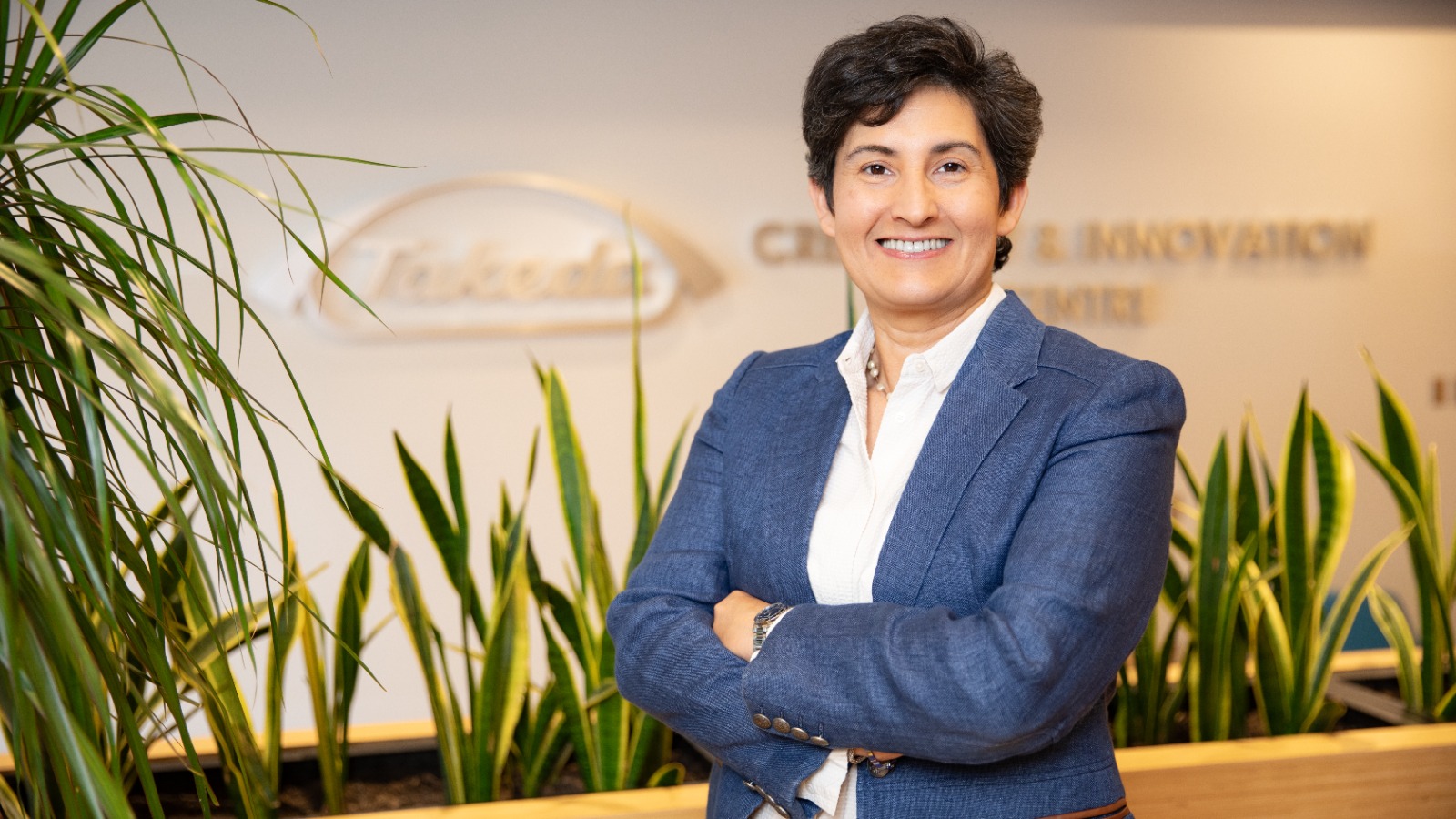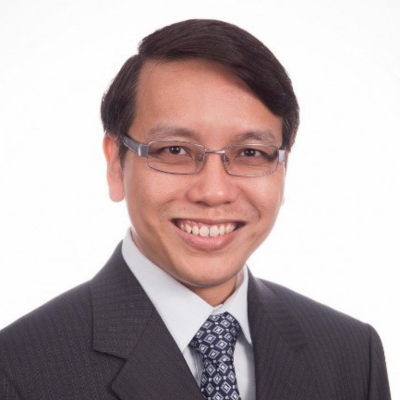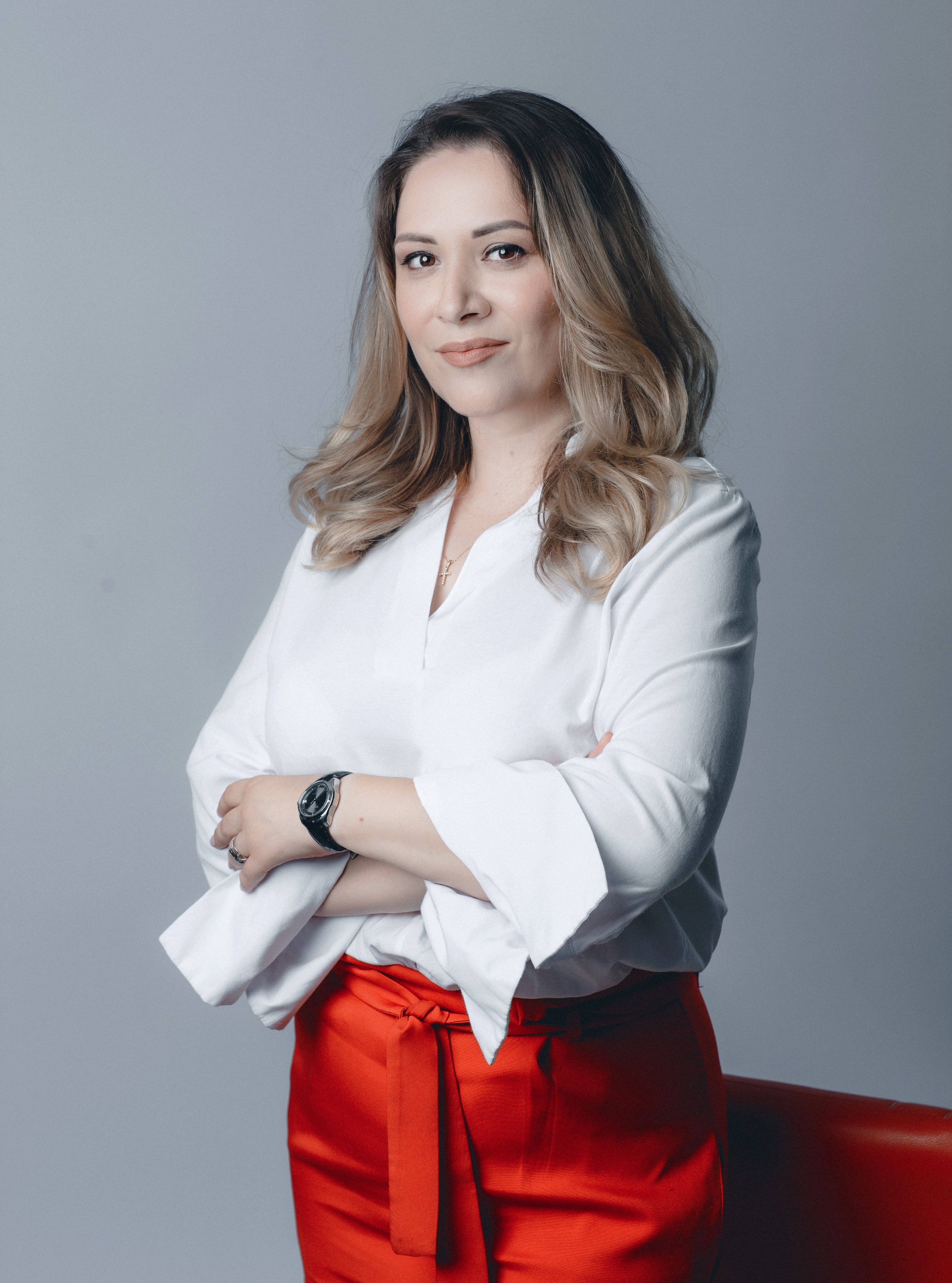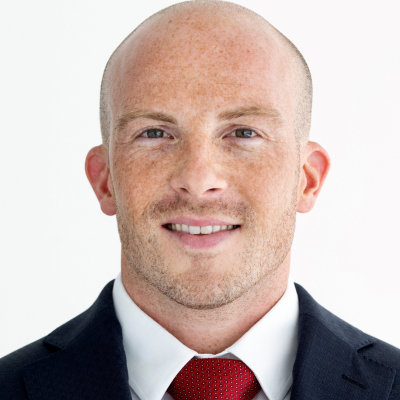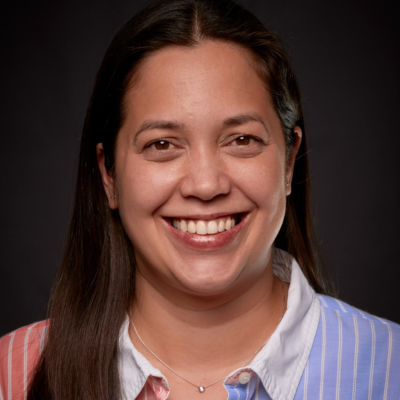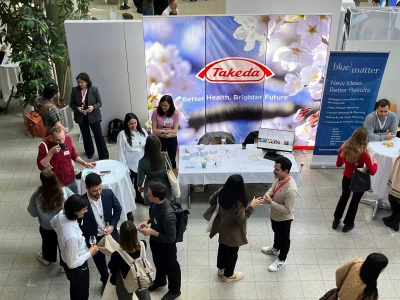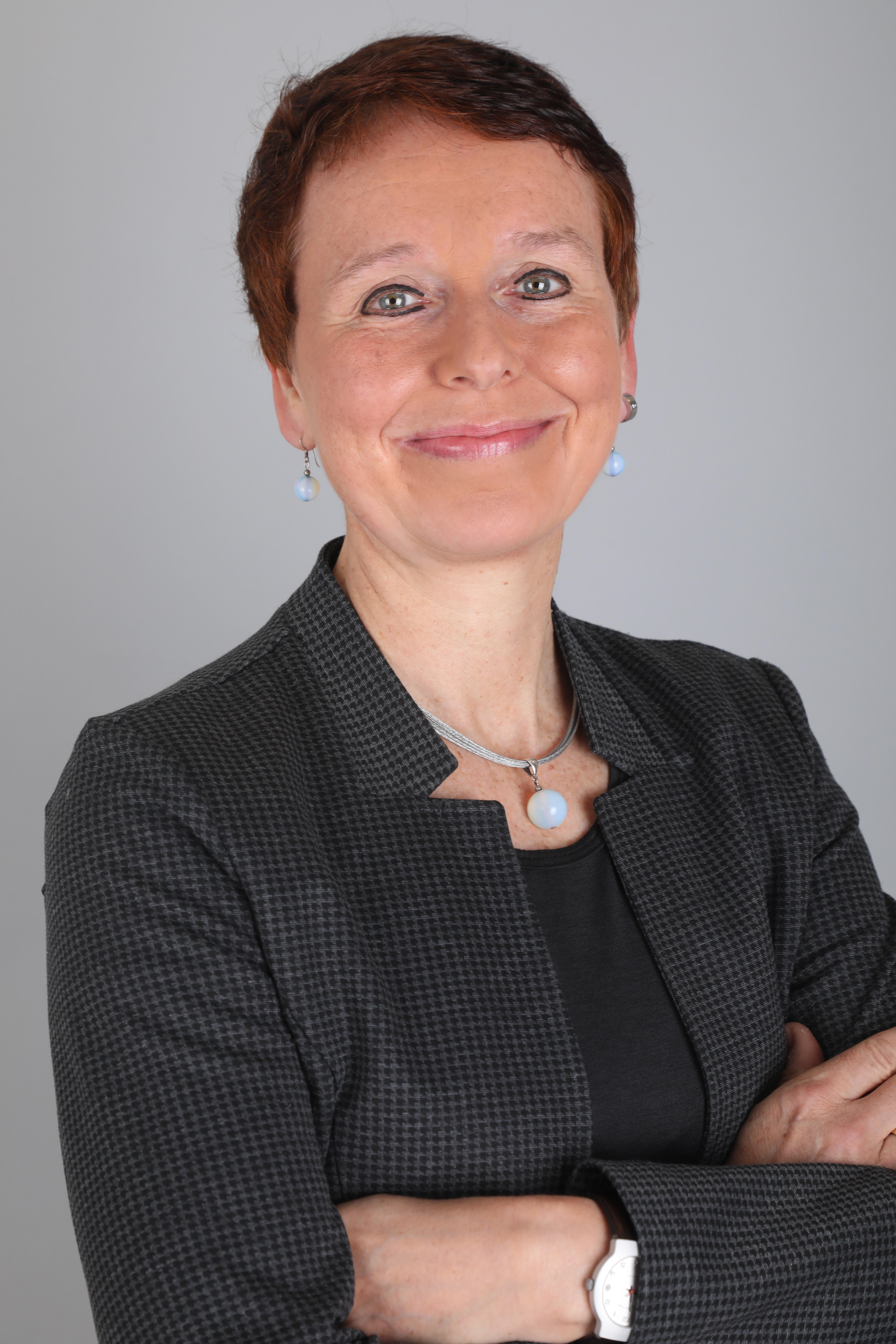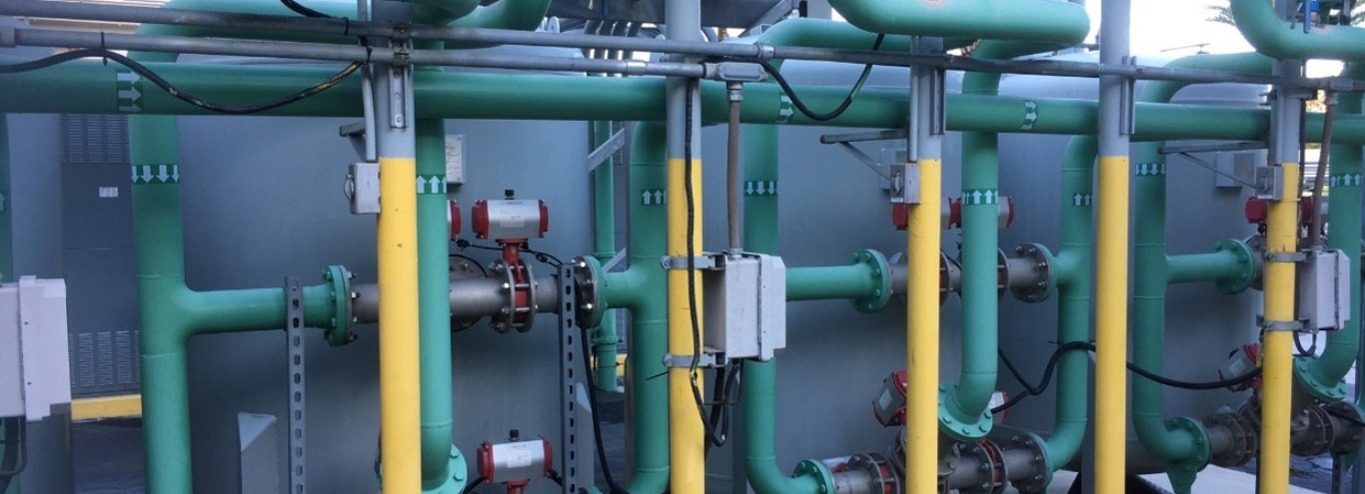
Saving Millions Of Gallons Of Water At No Additional Cost
Here's what's going on in our Los Angeles facility
At Takeda, we take pride in the manufacture of life-changing therapies for our patients. We also take pride in being good stewards of our natural resources and have a genuine commitment to reduce water consumption by both optimizing water use and investing in water-efficient equipment and processes. In the spirit of continuous improvement, we have pushed ourselves to reduce water consumption 5%, from a 2019 baseline, by 2025.
Our Los Angeles site currently uses about 200 million gallons of water every year – the equivalent of about 300 Olympic sized swimming pools! The site plans to grow its capacity to manufacture therapies, but to do so will increase its water use. To meet the reduction goal, it needs to offset the increase consumption plus the 5% savings. The total? About 30 million gallons altogether.
Finding ways to save 30 million gallons is no easy feat so our leaders in Los Angeles did what they thought would be best: they asked the employees.
Ideas were submitted from employees representing virtually every department, and each was ranked on an impact scale based on:
- Water saved annually (in gallons)
- Cost to implement
- Complexity
Some ideas were so good, and relatively easy to implement, that there was no reason to wait! Check them out:
Oleg B., Principal Engineer - Automation Engineering, suggested optimizing multi-media water filtration. In 2005, we upgraded our filters to increase water flow and the filters were scheduled for an automatic backwash every seven days to flush out accumulated debris and particles. The seven-day cycle was implemented with the thought that it would generate the highest quality product. But two factors occurred to Oleg:
- The original source of the water was from the city of Los Angeles and because it was already filtered, the filtration system did not have to work as hard
- The filtration system had a safety system that would trigger a backwash if it was needed – and it had never been triggered
Oleg determined that the Los Angeles site could shift from a seven-day cycle to a 28-day cycle with zero impact to quality and no additional investment needed. The savings: 1.3 million annually.
Tyler C., Senior Automation Engineer - Automation Engineering, had another idea. In Tyler’s building, there are 13 skids to clean process equipment and after each cleaning, the equipment is rinsed with distilled water known as Water-For-Injection (or WFI). The WFI can be stored in a tank for up to 24 hours and still retain its sterility. Tyler observed that although the WFI could remain stored, the system was flushing the tank after every cleaning – wasting more than 60 gallons every time!
Knowing how important WFI sterility is to the quality of the product, Tyler analyzed the average number of cleanings and the cycle times of the tanks to determine that we could save more than 1.8 million gallons of water annually by not flushing the tanks after each cleaning – and it could be done at no additional expense to the site.
What’s next?
The team in Los Angeles, and other Takeda sites around the globe, continue to look for ways to conserve our natural resources, and we are lucky to have employees that are committed to improving how we do the important work that we do – every day.
Watch how Takeda's facility in Lessines is pioneering wastewater treatment
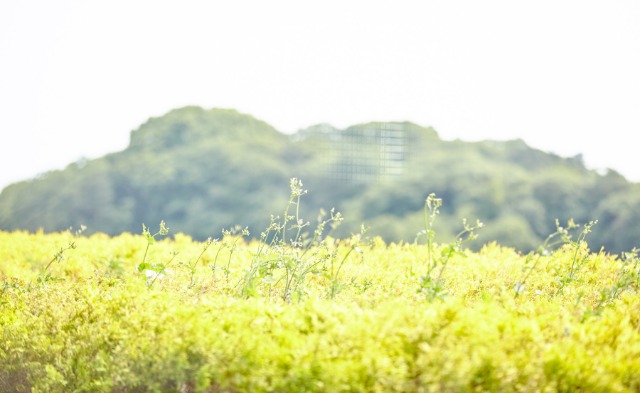
Jobs for you
- Microbiology Contamination Control Manager Los Angeles, California Category: Quality
- Manufacturing Supervisor Los Angeles, California Category: Manufacturing/Production
- Senior Automation Engineer MES Los Angeles, California Category: Automation and AI
- Senior Automation Engineer BAS Los Angeles, California Category: Automation and AI
Related content
-
 Life at Takeda Pharmaceutical Hear from our employees, read our latest news, and learn more about Takeda August 24, 2023
Life at Takeda Pharmaceutical Hear from our employees, read our latest news, and learn more about Takeda August 24, 2023 -

-

-

-

-

-

-

-

-

-

-
 Patient Story: Rosie Watch this video to learn about the extraordinary journey that Rosie and her parents have endured. March 30, 2021
Patient Story: Rosie Watch this video to learn about the extraordinary journey that Rosie and her parents have endured. March 30, 2021 -

-

-
 Informieren Sie sich über Stellenangebote an Takedas Produktionsstandort in Singen (Hohentwiel). Der Takeda Produktionsstandort in Singen (Hohentwiel) bietet hervorragende Karrierechancen und einen sicheren Arbeitsplatz mit Zukunft bei einem hervorragenden Arbeitgeber. Erfahren Sie noch heute mehr über Jobs bei Takeda! October 16, 2023 Life at Takeda Related Content Our Manufacturing Facilities
Informieren Sie sich über Stellenangebote an Takedas Produktionsstandort in Singen (Hohentwiel). Der Takeda Produktionsstandort in Singen (Hohentwiel) bietet hervorragende Karrierechancen und einen sicheren Arbeitsplatz mit Zukunft bei einem hervorragenden Arbeitgeber. Erfahren Sie noch heute mehr über Jobs bei Takeda! October 16, 2023 Life at Takeda Related Content Our Manufacturing Facilities -
 Our Climate Action Programs are making a positive impact At each of our manufacturing locations, we've created a Climate Action Program (CAPS). Teams at each site identify and execute initiatives that will help us meet our climate, waste, and water goals. They create opportunities for employees to share and execute ideas to help us deliver on our environmental goals. October 25, 2023 Life at Takeda Related Content Sustainability
Our Climate Action Programs are making a positive impact At each of our manufacturing locations, we've created a Climate Action Program (CAPS). Teams at each site identify and execute initiatives that will help us meet our climate, waste, and water goals. They create opportunities for employees to share and execute ideas to help us deliver on our environmental goals. October 25, 2023 Life at Takeda Related Content Sustainability -
 Employee Spotlight: LaAngela Learn more about LaAngela, her story, and her career journey working at Takeda. October 04, 2023
Employee Spotlight: LaAngela Learn more about LaAngela, her story, and her career journey working at Takeda. October 04, 2023 -

-

-

-

-

-

-

-

-

-

-

-

-

-
 Employee Spotlight: Eni A. from MA Bio Ops - Bio OpU As we pursue our purpose to create better health for people and a brighter future for the world, we know that every member of our team has their journey. Learn more about Eni and her path at Takeda. October 14, 2023 Life at Takeda Related Content Employee Spotlight
Employee Spotlight: Eni A. from MA Bio Ops - Bio OpU As we pursue our purpose to create better health for people and a brighter future for the world, we know that every member of our team has their journey. Learn more about Eni and her path at Takeda. October 14, 2023 Life at Takeda Related Content Employee Spotlight -
 Employee Spotlight: Tito from MA Bio Ops - Bio OpU As we pursue our purpose to create better health for people and a brighter future for the world, we know that every member of our team has their journey. Learn more about Tito and his path at Takeda. October 25, 2023 Life at Takeda Related Content Employee Spotlight
Employee Spotlight: Tito from MA Bio Ops - Bio OpU As we pursue our purpose to create better health for people and a brighter future for the world, we know that every member of our team has their journey. Learn more about Tito and his path at Takeda. October 25, 2023 Life at Takeda Related Content Employee Spotlight -

-

-

-
 Global Patient Safety Evaluation Fellowship The purpose of this fellowship is to provide the fellow with in-depth training in safety risk assessment, characterization, and minimization/mitigation. October 10, 2023 Life at Takeda Related Content Fellowships
Global Patient Safety Evaluation Fellowship The purpose of this fellowship is to provide the fellow with in-depth training in safety risk assessment, characterization, and minimization/mitigation. October 10, 2023 Life at Takeda Related Content Fellowships -
 Takeda's Manufacturing Site in Los Angeles Takeda's manufacturing facility in Los Angeles produces plasma-derived products for people with rare, chronic and genetic diseases. We offer stimulating careers, encourage innovation, and foster an inclusive, collaborative workplace. October 16, 2023 Life at Takeda Related Content Our Manufacturing Facilities
Takeda's Manufacturing Site in Los Angeles Takeda's manufacturing facility in Los Angeles produces plasma-derived products for people with rare, chronic and genetic diseases. We offer stimulating careers, encourage innovation, and foster an inclusive, collaborative workplace. October 16, 2023 Life at Takeda Related Content Our Manufacturing Facilities -
 Explore career opportunities at Takeda's manufacturing facility in Covington, Georgia. Takeda is hiring in Covington, Georgia. Learn about our state-of-the-art facility and world-class benefits that support your whole self. Jobs are now open for manufacturing, quality, engineering, and more. Apply today! October 18, 2023 Life at Takeda Related Content Our Manufacturing Facilities
Explore career opportunities at Takeda's manufacturing facility in Covington, Georgia. Takeda is hiring in Covington, Georgia. Learn about our state-of-the-art facility and world-class benefits that support your whole self. Jobs are now open for manufacturing, quality, engineering, and more. Apply today! October 18, 2023 Life at Takeda Related Content Our Manufacturing Facilities -
 For Takeda employees in Thousand Oaks "Every Vial Has a Name" - Bio OpU Takeda is growing in our Thousand Oaks, California, facility. Learn about our expansion plans and the world-class benefits that our employees receive. Jobs are now open for manufacturing, quality, engineering, and more. October 18, 2023 Life at Takeda Related Content Our Manufacturing Facilities
For Takeda employees in Thousand Oaks "Every Vial Has a Name" - Bio OpU Takeda is growing in our Thousand Oaks, California, facility. Learn about our expansion plans and the world-class benefits that our employees receive. Jobs are now open for manufacturing, quality, engineering, and more. October 18, 2023 Life at Takeda Related Content Our Manufacturing Facilities -
 Global Regulatory Affairs, Drugs & Biologics Fellowship The fellow will receive mentorship from the Global Regulatory Affairs Development team and will collaborate with cross-functional project teams, as well as Global Health Authorities. October 25, 2023 Life at Takeda Related Content Fellowships
Global Regulatory Affairs, Drugs & Biologics Fellowship The fellow will receive mentorship from the Global Regulatory Affairs Development team and will collaborate with cross-functional project teams, as well as Global Health Authorities. October 25, 2023 Life at Takeda Related Content Fellowships -
 Global Clinical Operations Fellowship The GCO function at Takeda is responsible for operational strategy, planning and oversight of early development clinical programs. The fellow will receive mentorship and individual guidance from the GCO team and collaborate on cross-functional teams. October 25, 2023 Life at Takeda Related Content Fellowships
Global Clinical Operations Fellowship The GCO function at Takeda is responsible for operational strategy, planning and oversight of early development clinical programs. The fellow will receive mentorship and individual guidance from the GCO team and collaborate on cross-functional teams. October 25, 2023 Life at Takeda Related Content Fellowships -
 Global Clinical Supply Chain Fellowship Fellows in Global Clinical Supply Chain will learn the skills necessary to successfully manage investigational products at all stages of clinical development. They will achieve this by gaining hands-on experience with each of the major teams within Global Clinical Supply Chain. October 25, 2023 Life at Takeda Related Content Fellowships
Global Clinical Supply Chain Fellowship Fellows in Global Clinical Supply Chain will learn the skills necessary to successfully manage investigational products at all stages of clinical development. They will achieve this by gaining hands-on experience with each of the major teams within Global Clinical Supply Chain. October 25, 2023 Life at Takeda Related Content Fellowships -
 Takeda Global Medical Affairs Fellowship Fellows will learn the role of Global Medical Affairs, developing skills in the analysis, interpretation, and communication of clinical data while expanding their competencies in managing complex projects and working with global matrixed, multidisciplinary teams. October 25, 2023 Life at Takeda Related Content Fellowships
Takeda Global Medical Affairs Fellowship Fellows will learn the role of Global Medical Affairs, developing skills in the analysis, interpretation, and communication of clinical data while expanding their competencies in managing complex projects and working with global matrixed, multidisciplinary teams. October 25, 2023 Life at Takeda Related Content Fellowships -
 Global Medical Communications Fellowship Explore more October 25, 2023 Life at Takeda Related Content Fellowships
Global Medical Communications Fellowship Explore more October 25, 2023 Life at Takeda Related Content Fellowships -
 Health Economics and Outcomes Research Fellowship Knowledge and experience is gained evaluating economic, humanistic, and clinical outcomes of drug therapy. October 26, 2023 Life at Takeda Related Content Fellowships
Health Economics and Outcomes Research Fellowship Knowledge and experience is gained evaluating economic, humanistic, and clinical outcomes of drug therapy. October 26, 2023 Life at Takeda Related Content Fellowships -
 Outcomes Research & Data Science Fellowship Outcomes Research & Data Science Fellowship Program is an opportunity for University of Mississippi Department of Pharmacy Administration graduate students to gain experience in leveraging healthcare data and drug market information to demonstrate value of Takeda’s products for patients. October 26, 2023 Life at Takeda Related Content Fellowships
Outcomes Research & Data Science Fellowship Outcomes Research & Data Science Fellowship Program is an opportunity for University of Mississippi Department of Pharmacy Administration graduate students to gain experience in leveraging healthcare data and drug market information to demonstrate value of Takeda’s products for patients. October 26, 2023 Life at Takeda Related Content Fellowships -
 Redefining STEM Futures for Students By connecting with local communities, students and teachers can better understand what they can accomplish through work that makes a global impact, with a team that’s prepared to support them to their full potential. October 26, 2023 Life at Takeda Related Content Community Involvement
Redefining STEM Futures for Students By connecting with local communities, students and teachers can better understand what they can accomplish through work that makes a global impact, with a team that’s prepared to support them to their full potential. October 26, 2023 Life at Takeda Related Content Community Involvement -
 Global Regulatory Affairs, Labeling Strategy Fellowship The Global Regulatory Labeling Strategy fellowship program will provide an opportunity to provide strategic and tactical labeling expertise to teams while ensuring compliance with applicable regulatory requirements. October 26, 2023 Life at Takeda Related Content Fellowships
Global Regulatory Affairs, Labeling Strategy Fellowship The Global Regulatory Labeling Strategy fellowship program will provide an opportunity to provide strategic and tactical labeling expertise to teams while ensuring compliance with applicable regulatory requirements. October 26, 2023 Life at Takeda Related Content Fellowships -
 US Medical and Scientific Communications Fellowship The fellow will have the opportunity to experience, collaborate with, and receive individual mentorship from various functions within US Medical and Scientific Communications, as part of a one-year fellowship program. October 26, 2023 Life at Takeda Related Content Fellowships
US Medical and Scientific Communications Fellowship The fellow will have the opportunity to experience, collaborate with, and receive individual mentorship from various functions within US Medical and Scientific Communications, as part of a one-year fellowship program. October 26, 2023 Life at Takeda Related Content Fellowships -
 US Medical and Field Medical Fellowship The fellow will have the opportunity to experience, collaborate with and receive individual mentorship from the in-house and field-based groups within US Medical. October 26, 2023 Life at Takeda Related Content Fellowships
US Medical and Field Medical Fellowship The fellow will have the opportunity to experience, collaborate with and receive individual mentorship from the in-house and field-based groups within US Medical. October 26, 2023 Life at Takeda Related Content Fellowships -
 Takeda Resource Group: Black Leadership Council Learn more about BLC, Takeda's employee resource group dedicated to fostering allyship, equity and fair representation for employees of African Ancestry. October 25, 2023 Life at Takeda Related Content Diversity, Equity, & Inclusion
Takeda Resource Group: Black Leadership Council Learn more about BLC, Takeda's employee resource group dedicated to fostering allyship, equity and fair representation for employees of African Ancestry. October 25, 2023 Life at Takeda Related Content Diversity, Equity, & Inclusion -
 Employee Spotlight: Amanda Learn more about Amanda, her story, and her career journey working at Takeda. October 26, 2023 Life at Takeda Related Content Employee Spotlight
Employee Spotlight: Amanda Learn more about Amanda, her story, and her career journey working at Takeda. October 26, 2023 Life at Takeda Related Content Employee Spotlight -
 Employee Spotlight: Emmanuel Learn more about Emmanuel, his story, and his career journey working at Takeda. October 04, 2023 Life at Takeda Related Content Employee Spotlight
Employee Spotlight: Emmanuel Learn more about Emmanuel, his story, and his career journey working at Takeda. October 04, 2023 Life at Takeda Related Content Employee Spotlight -
 Employee Spotlight: Rosa Learn more about Rosa, her story, and her career journey working at Takeda. October 05, 2023 Life at Takeda Related Content Employee Spotlight
Employee Spotlight: Rosa Learn more about Rosa, her story, and her career journey working at Takeda. October 05, 2023 Life at Takeda Related Content Employee Spotlight -
 Employee Spotlight: Valerie Quezada Learn more about Valerie Quezada and her career journey with Takeda. October 04, 2023 Life at Takeda Related Content Employee Spotlight
Employee Spotlight: Valerie Quezada Learn more about Valerie Quezada and her career journey with Takeda. October 04, 2023 Life at Takeda Related Content Employee Spotlight -
 Community, Sustainability, and Well-being: Takeda's Employee Garden Building community can take many different forms. For Joris Bracelli and his colleagues at Takeda’s Neuchâtel office, it took the form of a thriving community garden! Learn more about the garden and how it fosters a more engaged and environmentally-conscious work environment. October 06, 2023 Life at Takeda Related Content Employee Spotlight
Community, Sustainability, and Well-being: Takeda's Employee Garden Building community can take many different forms. For Joris Bracelli and his colleagues at Takeda’s Neuchâtel office, it took the form of a thriving community garden! Learn more about the garden and how it fosters a more engaged and environmentally-conscious work environment. October 06, 2023 Life at Takeda Related Content Employee Spotlight -
 From Burnout to Bliss: How Prioritizing Well-Being Transformed My Career Does it sometimes feel like your work is in competition with the rest of your life? Kacy Fleming, the Head of Takeda’s Global Well-Being program, shares how personal challenges fueled her career transformation and inspired her to advocate for a style of working in which “life” and “work” are fully aligned. October 06, 2023 Life at Takeda Related Content Employee Spotlight
From Burnout to Bliss: How Prioritizing Well-Being Transformed My Career Does it sometimes feel like your work is in competition with the rest of your life? Kacy Fleming, the Head of Takeda’s Global Well-Being program, shares how personal challenges fueled her career transformation and inspired her to advocate for a style of working in which “life” and “work” are fully aligned. October 06, 2023 Life at Takeda Related Content Employee Spotlight -
 Research and Development At Takeda R&D, we do more for patients by translating science into highly innovative, life-changing medicines across our core Therapeutic Areas in Innovative Biopharma. October 02, 2023
Research and Development At Takeda R&D, we do more for patients by translating science into highly innovative, life-changing medicines across our core Therapeutic Areas in Innovative Biopharma. October 02, 2023 -
 Takeda Resource Group: Building Asian Leaders Learn more about Takeda Resource Group Building Asian Leaders, which strives to bring meaningful professional and personal development opportunities to Takeda employees, with a specific focus on empowering the Asian community to grow as leaders in the workplace. October 26, 2023 Life at Takeda Related Content Diversity, Equity, & Inclusion
Takeda Resource Group: Building Asian Leaders Learn more about Takeda Resource Group Building Asian Leaders, which strives to bring meaningful professional and personal development opportunities to Takeda employees, with a specific focus on empowering the Asian community to grow as leaders in the workplace. October 26, 2023 Life at Takeda Related Content Diversity, Equity, & Inclusion -
 Employee Spotlight: Gunter Gunter speaks to Takeda's values and how the challenges undertaken by this engineering team, and all of Takeda, go beyond individual self-improvement. October 26, 2023 Life at Takeda Related Content Innovation
Employee Spotlight: Gunter Gunter speaks to Takeda's values and how the challenges undertaken by this engineering team, and all of Takeda, go beyond individual self-improvement. October 26, 2023 Life at Takeda Related Content Innovation -
 Inspiring Female Leadership at Takeda Did you know that women represent close to 70% of the global healthcare workforce, but there is a 28% gender wage gap in healthcare around the globe? Takeda is committed to empowering women as business and thought leaders in healthcare. October 26, 2023 Life at Takeda Related Content Diversity, Equity, & Inclusion
Inspiring Female Leadership at Takeda Did you know that women represent close to 70% of the global healthcare workforce, but there is a 28% gender wage gap in healthcare around the globe? Takeda is committed to empowering women as business and thought leaders in healthcare. October 26, 2023 Life at Takeda Related Content Diversity, Equity, & Inclusion -
 Your Next Challenge: Driving Rapid Change Through Your Ideas Takeda shares how they incorporate 3D printing into their manufacturing sites. Learn how employees develop designs before they hand them off to their engineers — delivering a prototype only a couple hours later. October 26, 2023 Life at Takeda Related Content Innovation
Your Next Challenge: Driving Rapid Change Through Your Ideas Takeda shares how they incorporate 3D printing into their manufacturing sites. Learn how employees develop designs before they hand them off to their engineers — delivering a prototype only a couple hours later. October 26, 2023 Life at Takeda Related Content Innovation -
 Takeda Summer Internship Our summer internship programs are committed to enhancing students career paths through building leadership opportunities and relationship building connections. October 26, 2023 Life at Takeda Related Content Internships
Takeda Summer Internship Our summer internship programs are committed to enhancing students career paths through building leadership opportunities and relationship building connections. October 26, 2023 Life at Takeda Related Content Internships -
 Takeda Resource Group: Take Pride Take Pride serves as a visible and accessible resource for all Takeda employees regardless of sexual orientation or gender identity to ensure that Takeda's LGBTQ employees and allies feel safe, respected, and supported. October 26, 2023 Life at Takeda Related Content Diversity, Equity, & Inclusion
Takeda Resource Group: Take Pride Take Pride serves as a visible and accessible resource for all Takeda employees regardless of sexual orientation or gender identity to ensure that Takeda's LGBTQ employees and allies feel safe, respected, and supported. October 26, 2023 Life at Takeda Related Content Diversity, Equity, & Inclusion -
 Takeda named in Human Rights Campaign Best Places to Work for LGBTQA+ For the sixth consecutive year, Takeda has earned a perfect score of 100 on the Human Rights Campaign's Corporate Equality Index October 26, 2023 Life at Takeda Related Content Diversity, Equity, & Inclusion
Takeda named in Human Rights Campaign Best Places to Work for LGBTQA+ For the sixth consecutive year, Takeda has earned a perfect score of 100 on the Human Rights Campaign's Corporate Equality Index October 26, 2023 Life at Takeda Related Content Diversity, Equity, & Inclusion -
 Doug Kuzinar Employee Spotlight Hear from former Commercial Leadership Development Program Associate Doug Kuzinar, who now works as as the associate director of health provider marketing for GI Rare. October 26, 2023 Life at Takeda Related Content Employee Spotlight
Doug Kuzinar Employee Spotlight Hear from former Commercial Leadership Development Program Associate Doug Kuzinar, who now works as as the associate director of health provider marketing for GI Rare. October 26, 2023 Life at Takeda Related Content Employee Spotlight -
 Employee Spotlight: Alenoosh Learn more about Alenoosh, her story, and her career journey working at Takeda. October 26, 2023 Life at Takeda Related Content Employee Spotlight
Employee Spotlight: Alenoosh Learn more about Alenoosh, her story, and her career journey working at Takeda. October 26, 2023 Life at Takeda Related Content Employee Spotlight -
 Diversity, Equity and Inclusion at Takeda At Takeda, the commitment to Diversity, Equity & Inclusion (DE&I) is a personal one. Our team brings unique backgrounds and experiences. September 28, 2023
Diversity, Equity and Inclusion at Takeda At Takeda, the commitment to Diversity, Equity & Inclusion (DE&I) is a personal one. Our team brings unique backgrounds and experiences. September 28, 2023 -
 Analytics Leadership Development Program (ALDP) Takeda’s Analytics Leadership Development Program (ALDP) is committed to building future analytics leaders with commercial competencies and leadership skills that allow them to successfully drive superior business while implementing critical analytics in a complex global healthcare environment. October 05, 2023 Life at Takeda Related Content Job Overview
Analytics Leadership Development Program (ALDP) Takeda’s Analytics Leadership Development Program (ALDP) is committed to building future analytics leaders with commercial competencies and leadership skills that allow them to successfully drive superior business while implementing critical analytics in a complex global healthcare environment. October 05, 2023 Life at Takeda Related Content Job Overview -
 Working as a Manufacturing Technician in Round Lake Our Manufacturing Technicians are critical to the success of our 24-7 Round Lake facility and in ensuring that patients can get the medicines they need. Our Technicians start by inspecting the manufactured product for irregularities or defects, and later help with the packaging of the finished product. October 25, 2023 Life at Takeda Related Content Job Overview
Working as a Manufacturing Technician in Round Lake Our Manufacturing Technicians are critical to the success of our 24-7 Round Lake facility and in ensuring that patients can get the medicines they need. Our Technicians start by inspecting the manufactured product for irregularities or defects, and later help with the packaging of the finished product. October 25, 2023 Life at Takeda Related Content Job Overview -
 Employee Spotlight: Lindsey D. As we pursue our purpose to create better health for people and a brighter future for the world, we know that every member of our team has their own journey. Learn more about Lindsey and her path at Takeda. October 25, 2023 Life at Takeda Related Content Employee Spotlight
Employee Spotlight: Lindsey D. As we pursue our purpose to create better health for people and a brighter future for the world, we know that every member of our team has their own journey. Learn more about Lindsey and her path at Takeda. October 25, 2023 Life at Takeda Related Content Employee Spotlight -
 Employee Spotlight: Lea Strangio With Takeda’s welcoming and diverse culture comprised of great people, Lea found that she’s always growing and sharpening her expertise. October 25, 2023 Life at Takeda Related Content Employee Spotlight
Employee Spotlight: Lea Strangio With Takeda’s welcoming and diverse culture comprised of great people, Lea found that she’s always growing and sharpening her expertise. October 25, 2023 Life at Takeda Related Content Employee Spotlight -
 Creating a Space for Others to Lead at Takeda’s first TEDx Lalaine Gedal, Associate Director Leadership Development, US Business Unit, at Takeda organized the company's first-ever TEDx event. Read on to learn more. October 25, 2023 Life at Takeda Related Content Employee Spotlight
Creating a Space for Others to Lead at Takeda’s first TEDx Lalaine Gedal, Associate Director Leadership Development, US Business Unit, at Takeda organized the company's first-ever TEDx event. Read on to learn more. October 25, 2023 Life at Takeda Related Content Employee Spotlight -
 Trial Diversity, Equity, Inclusion, and Mentorship: Why I’m Proud to Work at Takeda This year, take a moment to celebrate your successes. LaShell, Senior Director, Head of Diversity, Equity & Inclusion in Clinical Research, shares the achievements she’s proud of and why it’s important to open the door for someone else as you are coming in. October 25, 2023 Life at Takeda Related Content Diversity, Equity, & Inclusion Employee Spotlight
Trial Diversity, Equity, Inclusion, and Mentorship: Why I’m Proud to Work at Takeda This year, take a moment to celebrate your successes. LaShell, Senior Director, Head of Diversity, Equity & Inclusion in Clinical Research, shares the achievements she’s proud of and why it’s important to open the door for someone else as you are coming in. October 25, 2023 Life at Takeda Related Content Diversity, Equity, & Inclusion Employee Spotlight -
 Explore career opportunities at Takeda's facility in Vashi, India. Takeda is hiring in Vashi, India. Discover more about our facility and how we empower our employees with career growth opportunities and an inclusive environment. October 25, 2023 Life at Takeda Related Content Location Our Manufacturing Facilities
Explore career opportunities at Takeda's facility in Vashi, India. Takeda is hiring in Vashi, India. Discover more about our facility and how we empower our employees with career growth opportunities and an inclusive environment. October 25, 2023 Life at Takeda Related Content Location Our Manufacturing Facilities -
 Über Takeda in Österreich In Österreich arbeitet Takeda entlang der gesamten pharmazeutischen Wertschöpfungskette: Forschung & Entwicklung, Plasmaaufbringung, Produktion und Vertrieb. Takeda ist der größte Pharmaarbeitgeber des Landes und der größte Standort im globalen Takeda-Netzwerk. October 25, 2023 Life at Takeda Related Content Business Overview Our Manufacturing Facilities
Über Takeda in Österreich In Österreich arbeitet Takeda entlang der gesamten pharmazeutischen Wertschöpfungskette: Forschung & Entwicklung, Plasmaaufbringung, Produktion und Vertrieb. Takeda ist der größte Pharmaarbeitgeber des Landes und der größte Standort im globalen Takeda-Netzwerk. October 25, 2023 Life at Takeda Related Content Business Overview Our Manufacturing Facilities -
 Über Takeda in Orth an der Donau Am Standort in Orth an der Donau in Österreich liegt der Fokus auf der Entwicklung und Herstellung von Gen- & Zelltherapie-Produkten und Biologika. Besonders die Gen- und Zelltherapie bietet die Chance, unheilbare Krankheiten in Zukunft besser therapierbar, vielleicht sogar heilbar machen zu können. October 25, 2023 Life at Takeda Related Content Our Manufacturing Facilities
Über Takeda in Orth an der Donau Am Standort in Orth an der Donau in Österreich liegt der Fokus auf der Entwicklung und Herstellung von Gen- & Zelltherapie-Produkten und Biologika. Besonders die Gen- und Zelltherapie bietet die Chance, unheilbare Krankheiten in Zukunft besser therapierbar, vielleicht sogar heilbar machen zu können. October 25, 2023 Life at Takeda Related Content Our Manufacturing Facilities -
 Über Takeda in Wien Der Wiener Standort ist facettenreich, flexibel und campusartig aufgebaut. Sie versorgen Patient*innen mit seltenen und komplexen Erkrankungen in Österreich und in über 100 Ländern weltweit mit lebenswichtigen Arzneimitteln. October 25, 2023 Life at Takeda Related Content Our Manufacturing Facilities
Über Takeda in Wien Der Wiener Standort ist facettenreich, flexibel und campusartig aufgebaut. Sie versorgen Patient*innen mit seltenen und komplexen Erkrankungen in Österreich und in über 100 Ländern weltweit mit lebenswichtigen Arzneimitteln. October 25, 2023 Life at Takeda Related Content Our Manufacturing Facilities -
 Explore career opportunities at Takeda's facility in Bekasi, Indonesia. Takeda is hiring in Bekasi, Indonesia. Discover more about our facility and how we focus on our employees with internal movement for promotion, overseas learning assignments, and project assignments. October 25, 2023 Life at Takeda Related Content Location Our Manufacturing Facilities
Explore career opportunities at Takeda's facility in Bekasi, Indonesia. Takeda is hiring in Bekasi, Indonesia. Discover more about our facility and how we focus on our employees with internal movement for promotion, overseas learning assignments, and project assignments. October 25, 2023 Life at Takeda Related Content Location Our Manufacturing Facilities -
 Explore career opportunities at Takeda's facility in Tianjin, China. Takeda is hiring in Tianjin, China. Discover more about our facility and how we empower our employees with career growth opportunities and an inclusive environment. October 25, 2023 Life at Takeda Related Content Our Manufacturing Facilities
Explore career opportunities at Takeda's facility in Tianjin, China. Takeda is hiring in Tianjin, China. Discover more about our facility and how we empower our employees with career growth opportunities and an inclusive environment. October 25, 2023 Life at Takeda Related Content Our Manufacturing Facilities -
 Our Past Drives Our Future: How Takeda’s History in Japan Impacts our Work Today Today, Takeda in Japan drives our heritage. Our Japan office is the pinnacle of our culture, and several institutions in the area pay homage to this history and continue to share our story. Learn about these institutions and how our history shapes our company identity to this day. October 25, 2023 Life at Takeda Related Content Business Overview
Our Past Drives Our Future: How Takeda’s History in Japan Impacts our Work Today Today, Takeda in Japan drives our heritage. Our Japan office is the pinnacle of our culture, and several institutions in the area pay homage to this history and continue to share our story. Learn about these institutions and how our history shapes our company identity to this day. October 25, 2023 Life at Takeda Related Content Business Overview -
 Una mirada al interior de Takeda Madrid en Tres Cantos Nuestra planta es puntera en investigación, desarrollo y fabricación en Terapia y Tecnología Celular, lo que nos convierte en un sitio único para trabajar. Desde Madrid fabricamos y suministramos la primera terapia celular alogénica aprobada en el territorio europeo. October 25, 2023 Life at Takeda Related Content Our Manufacturing Facilities
Una mirada al interior de Takeda Madrid en Tres Cantos Nuestra planta es puntera en investigación, desarrollo y fabricación en Terapia y Tecnología Celular, lo que nos convierte en un sitio único para trabajar. Desde Madrid fabricamos y suministramos la primera terapia celular alogénica aprobada en el territorio europeo. October 25, 2023 Life at Takeda Related Content Our Manufacturing Facilities -
 Über Takeda in Linz Am Takeda Standort in Linz, Österreich, werden lebenswichtige Arzneimittel für Patient*innen in über 70 Ländern weltweit produziert. Die Hauptprodukte gehören zur Gruppe der Biologika und unterscheiden sich durch einen komplexen biologischen Produktionsprozess von anderen Arzneimitteln. October 25, 2023 Life at Takeda Related Content Our Manufacturing Facilities
Über Takeda in Linz Am Takeda Standort in Linz, Österreich, werden lebenswichtige Arzneimittel für Patient*innen in über 70 Ländern weltweit produziert. Die Hauptprodukte gehören zur Gruppe der Biologika und unterscheiden sich durch einen komplexen biologischen Produktionsprozess von anderen Arzneimitteln. October 25, 2023 Life at Takeda Related Content Our Manufacturing Facilities -
 About the GMSGQ Plasma Operating Unit Takeda’s Plasma Operating Unit is a network of facilities utilizing some of the latest manufacturing technologies to deliver medicines all over the globe. October 25, 2023 Life at Takeda Related Content Business Overview
About the GMSGQ Plasma Operating Unit Takeda’s Plasma Operating Unit is a network of facilities utilizing some of the latest manufacturing technologies to deliver medicines all over the globe. October 25, 2023 Life at Takeda Related Content Business Overview -
 Takeda's MA Bio Manufacturing Facility - Bio OpU With locations across Lexington, Cambridge, and North Reading, Takeda’s Massachusetts Biologics Operations’ manufactures biologics, monoclonal antibodies, and the production of cell and gene therapy products. Read about our commitment to innovation, people, and performance to achieve our vision. October 25, 2023 Life at Takeda Related Content Our Manufacturing Facilities
Takeda's MA Bio Manufacturing Facility - Bio OpU With locations across Lexington, Cambridge, and North Reading, Takeda’s Massachusetts Biologics Operations’ manufactures biologics, monoclonal antibodies, and the production of cell and gene therapy products. Read about our commitment to innovation, people, and performance to achieve our vision. October 25, 2023 Life at Takeda Related Content Our Manufacturing Facilities -
 Employee Spotlight: Dindi Whitmore In everything Takeda's Quality teams accomplish, Dindi and her team take pride in knowing they do it right, always, to help patients. October 25, 2023 Life at Takeda Related Content Employee Spotlight
Employee Spotlight: Dindi Whitmore In everything Takeda's Quality teams accomplish, Dindi and her team take pride in knowing they do it right, always, to help patients. October 25, 2023 Life at Takeda Related Content Employee Spotlight -
 Commercial Leadership Development Program (CLDP) Our Commercial Leadership Development Program (CLDP) is committed to building diverse future leaders with commercial competencies and leadership skills that allow them to successfully drive superior business results in a complex global healthcare environment. October 25, 2023 Life at Takeda Related Content Learning & Development
Commercial Leadership Development Program (CLDP) Our Commercial Leadership Development Program (CLDP) is committed to building diverse future leaders with commercial competencies and leadership skills that allow them to successfully drive superior business results in a complex global healthcare environment. October 25, 2023 Life at Takeda Related Content Learning & Development -
 Global Humanitarian Crisis Leave Policy We are excited to announce we have launched a new global policy enabling employees to volunteer to support humanitarian crises. Over the last year, we’ve had requests from employees from all over the world to support humanitarian efforts in response to crises, which is what inspired this policy. October 25, 2023 Life at Takeda Related Content Community Involvement
Global Humanitarian Crisis Leave Policy We are excited to announce we have launched a new global policy enabling employees to volunteer to support humanitarian crises. Over the last year, we’ve had requests from employees from all over the world to support humanitarian efforts in response to crises, which is what inspired this policy. October 25, 2023 Life at Takeda Related Content Community Involvement -
 Working Here At Takeda, our strong, focused team of globally diverse colleagues are united by a shared vision, values and mission: to bring better health and a brighter future to people worldwide. October 25, 2023 Life at Takeda Related Content Business Overview
Working Here At Takeda, our strong, focused team of globally diverse colleagues are united by a shared vision, values and mission: to bring better health and a brighter future to people worldwide. October 25, 2023 Life at Takeda Related Content Business Overview -
 Takeda's career opportunities across Ireland. Takeda's presence in Ireland plays a key role in our global leadership on rare diseases, oncology, and gastroenterology. Our employees work across Commercial Operations, Manufacturing, Supply Chain, Quality, and Corporate Services, and they all share our purpose of bringing better health and creating a brighter future. October 25, 2023 Life at Takeda Related Content Our Manufacturing Facilities
Takeda's career opportunities across Ireland. Takeda's presence in Ireland plays a key role in our global leadership on rare diseases, oncology, and gastroenterology. Our employees work across Commercial Operations, Manufacturing, Supply Chain, Quality, and Corporate Services, and they all share our purpose of bringing better health and creating a brighter future. October 25, 2023 Life at Takeda Related Content Our Manufacturing Facilities -
 Shinpei's Journey with Takeda When you’re part of Takeda’s Global Quality team, you may find yourself with a unique opportunity to work in a new location for a period of time. Read on to learn more about Shinpei’s recent journey. October 25, 2023 Life at Takeda Related Content Employee Spotlight
Shinpei's Journey with Takeda When you’re part of Takeda’s Global Quality team, you may find yourself with a unique opportunity to work in a new location for a period of time. Read on to learn more about Shinpei’s recent journey. October 25, 2023 Life at Takeda Related Content Employee Spotlight -
 Employee Spotlight: Rahila Saeed We recently sat down with Rahila Saeed, USOBU patient services marketing lead, to learn more about her background – both on and off the clock. Read on to learn how her life has led her to a career with Takeda. October 25, 2023 Life at Takeda Related Content Employee Spotlight
Employee Spotlight: Rahila Saeed We recently sat down with Rahila Saeed, USOBU patient services marketing lead, to learn more about her background – both on and off the clock. Read on to learn how her life has led her to a career with Takeda. October 25, 2023 Life at Takeda Related Content Employee Spotlight -
 Employee Spotlight: Bryan H. As we pursue our purpose to create better health for people and a brighter future for the world, we know that each team member has a unique purpose that helps us deliver on that purpose. Learn more about U.S. Army veteran Bryan and his journey. October 25, 2023 Life at Takeda Related Content Employee Spotlight
Employee Spotlight: Bryan H. As we pursue our purpose to create better health for people and a brighter future for the world, we know that each team member has a unique purpose that helps us deliver on that purpose. Learn more about U.S. Army veteran Bryan and his journey. October 25, 2023 Life at Takeda Related Content Employee Spotlight -
 Takedas Cobot in Singen October 17, 2023 Life at Takeda Related Content Employee Spotlight Innovation
Takedas Cobot in Singen October 17, 2023 Life at Takeda Related Content Employee Spotlight Innovation -
 Learn State-of-the-Art Automation Skills and Work on Real Business Cases With Takeda! The Takeda Business Solutions team offers current university students and recent graduates the opportunity to work on a business case and gain real world experience. Through the TDA program, participants will be trained in state-of-the-art automation and data tools. October 18, 2023
Learn State-of-the-Art Automation Skills and Work on Real Business Cases With Takeda! The Takeda Business Solutions team offers current university students and recent graduates the opportunity to work on a business case and gain real world experience. Through the TDA program, participants will be trained in state-of-the-art automation and data tools. October 18, 2023 -
 Takeda's manufacturing facility in Singapore Takeda's manufacturing facility in Singapore is an integral part of the Biologics Operating Unit network with a key focus on supporting hematology products. It's also one of the leading locations for Takeda's carbon zero goals with its first-of-a-kind Zero Emissions Building. October 25, 2023 Life at Takeda Related Content Our Manufacturing Facilities
Takeda's manufacturing facility in Singapore Takeda's manufacturing facility in Singapore is an integral part of the Biologics Operating Unit network with a key focus on supporting hematology products. It's also one of the leading locations for Takeda's carbon zero goals with its first-of-a-kind Zero Emissions Building. October 25, 2023 Life at Takeda Related Content Our Manufacturing Facilities -
 Takeda Pharmaceuticals Round Lake Manufacturing Facility Takeda's manufacturing facility in Round Lake, Illinois, is an integral part of Takeda’s Plasma Network. The facility specializes in producing albumin in a flexible pouch and supplies its product to patients all over the world, with key markets in the U.S., China, and India. October 25, 2023 Life at Takeda Related Content Our Manufacturing Facilities
Takeda Pharmaceuticals Round Lake Manufacturing Facility Takeda's manufacturing facility in Round Lake, Illinois, is an integral part of Takeda’s Plasma Network. The facility specializes in producing albumin in a flexible pouch and supplies its product to patients all over the world, with key markets in the U.S., China, and India. October 25, 2023 Life at Takeda Related Content Our Manufacturing Facilities -
 Employee Spotlight: Kenneth B. from Covington As we pursue our purpose to create better health for people and a brighter future for the world, we know that every member of our team has their own journey. Learn more about Kenneth and his path at Takeda. October 25, 2023 Life at Takeda Related Content Employee Spotlight
Employee Spotlight: Kenneth B. from Covington As we pursue our purpose to create better health for people and a brighter future for the world, we know that every member of our team has their own journey. Learn more about Kenneth and his path at Takeda. October 25, 2023 Life at Takeda Related Content Employee Spotlight -
 Takeda’s ‘Sustainability by Design’ program takes planet-led approach Up to 80% of a product’s environmental impact is determined in the design phase of that product's development. At Takeda, we've launched a comprehensive and groundbreaking program called “Sustainability by Design" to identify opportunities to reduce a product's environmental impact during research and development. October 25, 2023 Life at Takeda Related Content Sustainability
Takeda’s ‘Sustainability by Design’ program takes planet-led approach Up to 80% of a product’s environmental impact is determined in the design phase of that product's development. At Takeda, we've launched a comprehensive and groundbreaking program called “Sustainability by Design" to identify opportunities to reduce a product's environmental impact during research and development. October 25, 2023 Life at Takeda Related Content Sustainability -
 Takeda Employees Named to Greater Conejo Valley Chamber of Commerce 40 Under 40 Takeda's Thousand Oaks manufacturing facility is proud to have two team members recognized by Greater Conejo Valley Chamber of Commerce as top 40 under 40. Read about their amazing contributions to Takeda and their community, and how they are inspiring others through their work. October 25, 2023 Life at Takeda Related Content Employee Spotlight
Takeda Employees Named to Greater Conejo Valley Chamber of Commerce 40 Under 40 Takeda's Thousand Oaks manufacturing facility is proud to have two team members recognized by Greater Conejo Valley Chamber of Commerce as top 40 under 40. Read about their amazing contributions to Takeda and their community, and how they are inspiring others through their work. October 25, 2023 Life at Takeda Related Content Employee Spotlight -
 Engineering EVP Highlight A highlight on Takeda's engineering team and their mission that always calls for new ways of approaching — and executing — innovation. October 25, 2023 Life at Takeda Related Content Business Overview
Engineering EVP Highlight A highlight on Takeda's engineering team and their mission that always calls for new ways of approaching — and executing — innovation. October 25, 2023 Life at Takeda Related Content Business Overview -
 Veterans Day 2022 To honor and thank veterans for their patriotism, love of country, and willingness to serve and sacrifice for the common good, Takeda's resource group, STRIVE, hosted a variety of events October 25, 2023 Life at Takeda Related Content Diversity, Equity, & Inclusion
Veterans Day 2022 To honor and thank veterans for their patriotism, love of country, and willingness to serve and sacrifice for the common good, Takeda's resource group, STRIVE, hosted a variety of events October 25, 2023 Life at Takeda Related Content Diversity, Equity, & Inclusion -
 Takeda Resource Group: Faith@Work Learn more about Faith@Work, Takeda's employee resource group dedicated to providing education around all faiths, beliefs, and spiritualities. October 03, 2023 Life at Takeda Related Content Diversity, Equity, & Inclusion
Takeda Resource Group: Faith@Work Learn more about Faith@Work, Takeda's employee resource group dedicated to providing education around all faiths, beliefs, and spiritualities. October 03, 2023 Life at Takeda Related Content Diversity, Equity, & Inclusion -
 Takeda Resource Group: IGNITE Learn more about IGNITE, Takeda's employee resource group dedicated to early to mid-career and transitioning employees. October 04, 2023 Life at Takeda Related Content Diversity, Equity, & Inclusion
Takeda Resource Group: IGNITE Learn more about IGNITE, Takeda's employee resource group dedicated to early to mid-career and transitioning employees. October 04, 2023 Life at Takeda Related Content Diversity, Equity, & Inclusion -
 Explore career opportunities at Takeda's facility in Naucalpan, Mexico. Takeda is hiring in Naucalpan, Mexico. Discover more about our facility and how we empower our employees with career growth opportunities and an inclusive environment. October 09, 2023 Life at Takeda Related Content Our Manufacturing Facilities
Explore career opportunities at Takeda's facility in Naucalpan, Mexico. Takeda is hiring in Naucalpan, Mexico. Discover more about our facility and how we empower our employees with career growth opportunities and an inclusive environment. October 09, 2023 Life at Takeda Related Content Our Manufacturing Facilities -
 Takeda Resource Group: IMPACTO IMPACTO is our employee resource group committed to making an impact by promoting an inclusive and diverse environment where members can discuss issues facing the LatinX community. October 09, 2023 Life at Takeda Related Content Diversity, Equity, & Inclusion
Takeda Resource Group: IMPACTO IMPACTO is our employee resource group committed to making an impact by promoting an inclusive and diverse environment where members can discuss issues facing the LatinX community. October 09, 2023 Life at Takeda Related Content Diversity, Equity, & Inclusion -
 Takeda Resource Group: STRIVE Learn more about STRIVE, our employee resource group dedicated to military-affiliated employees. October 14, 2023 Life at Takeda Related Content Diversity, Equity, & Inclusion
Takeda Resource Group: STRIVE Learn more about STRIVE, our employee resource group dedicated to military-affiliated employees. October 14, 2023 Life at Takeda Related Content Diversity, Equity, & Inclusion -
 Wichtige Prioritäten führen zu großartigen Ergebnissen für Takeda in Österreich Viele österreichweite sowie lokale Initiativen helfen uns dabei, unserer Verpflichtung gegenüber Patient*innen, Mitarbeitenden und der Umwelt nachzukommen. Werfen Sie einen Blick darauf. October 14, 2023 Life at Takeda Related Content Diversity, Equity, & Inclusion Innovation Sustainability
Wichtige Prioritäten führen zu großartigen Ergebnissen für Takeda in Österreich Viele österreichweite sowie lokale Initiativen helfen uns dabei, unserer Verpflichtung gegenüber Patient*innen, Mitarbeitenden und der Umwelt nachzukommen. Werfen Sie einen Blick darauf. October 14, 2023 Life at Takeda Related Content Diversity, Equity, & Inclusion Innovation Sustainability -
 Über Arbeitsplätze am Produktionsstandort von Takeda in Oranienburg, Region Berlin-Brandenburg Am Takeda-Standort Oranienburg in der Region Berlin-Brandenburg werden Arzneimittel in festen Darreichungsformen hergestellt. Wir bieten Ihnen hervorragende Karrierechancen und einen sicheren Arbeitsplatz mit Zukunft bei einem hervorragenden Arbeitgeber. Erfahren Sie noch heute mehr über unsere Stellenangebote! October 16, 2023 Life at Takeda Related Content Our Manufacturing Facilities
Über Arbeitsplätze am Produktionsstandort von Takeda in Oranienburg, Region Berlin-Brandenburg Am Takeda-Standort Oranienburg in der Region Berlin-Brandenburg werden Arzneimittel in festen Darreichungsformen hergestellt. Wir bieten Ihnen hervorragende Karrierechancen und einen sicheren Arbeitsplatz mit Zukunft bei einem hervorragenden Arbeitgeber. Erfahren Sie noch heute mehr über unsere Stellenangebote! October 16, 2023 Life at Takeda Related Content Our Manufacturing Facilities -
 Takeda's Brooklyn Park Manufacturing Facility - BIO OPU Takeda's manufacturing facility in Brooklyn Park is now the largest biologics manufacturer in the state of Minnesota. Team members have many opportunities to build their skills and careers – from supporting product expansion to the chance to work with some of the industry’s latest technology innovations. October 16, 2023 Life at Takeda Related Content Our Manufacturing Facilities
Takeda's Brooklyn Park Manufacturing Facility - BIO OPU Takeda's manufacturing facility in Brooklyn Park is now the largest biologics manufacturer in the state of Minnesota. Team members have many opportunities to build their skills and careers – from supporting product expansion to the chance to work with some of the industry’s latest technology innovations. October 16, 2023 Life at Takeda Related Content Our Manufacturing Facilities -
 Takeda Resource Group: Gender Parity Network The Gender Parity Network is an employee resource group committed to realizing gender parity across Takeda by fostering the development and advancement of women through a strong, diverse, engaged community. October 16, 2023 Life at Takeda Related Content Diversity, Equity, & Inclusion
Takeda Resource Group: Gender Parity Network The Gender Parity Network is an employee resource group committed to realizing gender parity across Takeda by fostering the development and advancement of women through a strong, diverse, engaged community. October 16, 2023 Life at Takeda Related Content Diversity, Equity, & Inclusion -
 Le site de Production Takeda à Neuchâtel Takeda recrute à Neuchâtel. Découvrez notre site, nos avantages et notre approche du développement de carrière. Des postes sont maintenant ouverts pour les départements de la Production, de la Qualité, de l'Ingénierie, et plus encore. October 16, 2023 Life at Takeda Related Content Our Manufacturing Facilities
Le site de Production Takeda à Neuchâtel Takeda recrute à Neuchâtel. Découvrez notre site, nos avantages et notre approche du développement de carrière. Des postes sont maintenant ouverts pour les départements de la Production, de la Qualité, de l'Ingénierie, et plus encore. October 16, 2023 Life at Takeda Related Content Our Manufacturing Facilities -
 Takeda Manufacturing Italia (sedi di Rieti e Pisa) sta assumendo Takeda assume a Rieti e a Pisa. Scopri di più sui nostri stabilimenti e sui benefit riservati ai dipendenti. Le posizioni sono aperte per la produzione, la qualità, l'ingegneria e altro ancora. Candidati oggi! October 18, 2023 Life at Takeda Related Content Our Manufacturing Facilities
Takeda Manufacturing Italia (sedi di Rieti e Pisa) sta assumendo Takeda assume a Rieti e a Pisa. Scopri di più sui nostri stabilimenti e sui benefit riservati ai dipendenti. Le posizioni sono aperte per la produzione, la qualità, l'ingegneria e altro ancora. Candidati oggi! October 18, 2023 Life at Takeda Related Content Our Manufacturing Facilities -
 Augmented Mixed and Virtual Reality is changing how we work Extended Reality (XR), which comprises Augmented Mixed and Virtual Reality, has the potential to transform the way we interact drastically in our manufacturing sites. It also generates numerous benefits, such as time savings, right-first- time, training effectiveness, as well as confidence and fun. October 19, 2023 Life at Takeda Related Content Innovation
Augmented Mixed and Virtual Reality is changing how we work Extended Reality (XR), which comprises Augmented Mixed and Virtual Reality, has the potential to transform the way we interact drastically in our manufacturing sites. It also generates numerous benefits, such as time savings, right-first- time, training effectiveness, as well as confidence and fun. October 19, 2023 Life at Takeda Related Content Innovation -

-
 Takeda named to the “2023 Best Places to Work” for Disability Inclusion For the second consecutive year, Takeda has been named a Best Place to Work for Disability Inclusion by Disability:In and the American Association of People with Disabilities (AAPD), this time receiving a top score of 100 for our commitments and efforts related to disability, equity and inclusion in the U.S. October 05, 2023 Life at Takeda Related Content Diversity, Equity, & Inclusion
Takeda named to the “2023 Best Places to Work” for Disability Inclusion For the second consecutive year, Takeda has been named a Best Place to Work for Disability Inclusion by Disability:In and the American Association of People with Disabilities (AAPD), this time receiving a top score of 100 for our commitments and efforts related to disability, equity and inclusion in the U.S. October 05, 2023 Life at Takeda Related Content Diversity, Equity, & Inclusion -
 Data, Digital & Technology (DDT) in GMSGQ Within our Global Manufacturing & Supply (GMS) and Global Quality (GQ) business functions, the DD&T team is making a huge impact – inspiring new ideas, exploring new technology, and co-creating solutions that are helping us bring our purpose to life. October 25, 2023 Life at Takeda Related Content Business Overview Innovation
Data, Digital & Technology (DDT) in GMSGQ Within our Global Manufacturing & Supply (GMS) and Global Quality (GQ) business functions, the DD&T team is making a huge impact – inspiring new ideas, exploring new technology, and co-creating solutions that are helping us bring our purpose to life. October 25, 2023 Life at Takeda Related Content Business Overview Innovation -
 Stefanie Granado Employee Spotlight How do you find a career that ignites your passions? It takes courage, but also authenticity and a sense of self to understand how you can best find meaning in your work. Head of US Oncology Business Unit at Takeda Stefanie Granado shares about her path to finding work developing transformative treatments for patients across the world. November 20, 2023 Life at Takeda Related Content Employee Spotlight
Stefanie Granado Employee Spotlight How do you find a career that ignites your passions? It takes courage, but also authenticity and a sense of self to understand how you can best find meaning in your work. Head of US Oncology Business Unit at Takeda Stefanie Granado shares about her path to finding work developing transformative treatments for patients across the world. November 20, 2023 Life at Takeda Related Content Employee Spotlight -
 Post-Doctoral Fellowship Programs Overview In collaboration with major universities within the United States, Takeda offers Fellowships to provide PharmD graduates with in-depth, specialized training. October 25, 2023 Life at Takeda Related Content Fellowships
Post-Doctoral Fellowship Programs Overview In collaboration with major universities within the United States, Takeda offers Fellowships to provide PharmD graduates with in-depth, specialized training. October 25, 2023 Life at Takeda Related Content Fellowships -
 Marketed Product Development Fellowship Fellow will learn how the MPD fulfills marketing authorization holder obligations, by conducting scientific, clinical, regulatory, and safety activities to ensure a continued positive benefit/risk profile of all products in the MPD portfolio. October 26, 2023 Life at Takeda Related Content Fellowships
Marketed Product Development Fellowship Fellow will learn how the MPD fulfills marketing authorization holder obligations, by conducting scientific, clinical, regulatory, and safety activities to ensure a continued positive benefit/risk profile of all products in the MPD portfolio. October 26, 2023 Life at Takeda Related Content Fellowships -
 Takeda Gastrointestinal & Inflammation Clinical Sciences Fellowship Takeda Gastrointestinal & Inflammation Clinical Sciences is an industry leader in advancing science to help bring medicines to patients with gastrointestinal, inflammatory and liver diseases. Fellows will have the opportunity to contribute to high-impact drug development programs from Phase 1 to Phase 3 clinical trials. November 13, 2023 Life at Takeda Related Content Fellowships
Takeda Gastrointestinal & Inflammation Clinical Sciences Fellowship Takeda Gastrointestinal & Inflammation Clinical Sciences is an industry leader in advancing science to help bring medicines to patients with gastrointestinal, inflammatory and liver diseases. Fellows will have the opportunity to contribute to high-impact drug development programs from Phase 1 to Phase 3 clinical trials. November 13, 2023 Life at Takeda Related Content Fellowships -
 Integrity in the Aftermath of a Historic Earthquake When the Great Kanto Earthquake struck on September 1, 1923, 100 years ago, Chobei Takeda V, the then-president of our company, made innovative efforts to help patients and safeguard the future of medical treatment. December 11, 2023 Life at Takeda Related Content Learning & Development
Integrity in the Aftermath of a Historic Earthquake When the Great Kanto Earthquake struck on September 1, 1923, 100 years ago, Chobei Takeda V, the then-president of our company, made innovative efforts to help patients and safeguard the future of medical treatment. December 11, 2023 Life at Takeda Related Content Learning & Development -
 Employee Spotlight: Giulia Learn more about Giulia, her story, and her career journey working at Takeda. November 17, 2023 Life at Takeda Related Content Employee Spotlight
Employee Spotlight: Giulia Learn more about Giulia, her story, and her career journey working at Takeda. November 17, 2023 Life at Takeda Related Content Employee Spotlight -
 Employee Spotlight: Sharilyn Learn about Sharilyn's exciting and challenging career journey to Manufacturing Manager for Suite 1 at the Singapore Woodlands Site. December 12, 2023 Life at Takeda Related Content Employee Spotlight
Employee Spotlight: Sharilyn Learn about Sharilyn's exciting and challenging career journey to Manufacturing Manager for Suite 1 at the Singapore Woodlands Site. December 12, 2023 Life at Takeda Related Content Employee Spotlight -
 Learn About Takeda in Hikari The Hikari Factory was established in 1946 in Hikari City, Yamaguchi Prefecture, primarily producing vaccines. It has since expanded its production lines to meet changing medical and patient needs. Today, it is a global manufacturing base with advanced production systems for small molecules, active pharmaceutical ingredients, sterile manufacturing, biologics, injectables, oral solid dosage, and vaccine products. November 08, 2023 Location Our Manufacturing Facilities
Learn About Takeda in Hikari The Hikari Factory was established in 1946 in Hikari City, Yamaguchi Prefecture, primarily producing vaccines. It has since expanded its production lines to meet changing medical and patient needs. Today, it is a global manufacturing base with advanced production systems for small molecules, active pharmaceutical ingredients, sterile manufacturing, biologics, injectables, oral solid dosage, and vaccine products. November 08, 2023 Location Our Manufacturing Facilities -
 Learn About Takeda in Narita Our Narita Factory was originally established in 1984 and is located in northern Chiba Prefecture not far from Narita International Airport. Here we manufacture pharmaceuticals called "plasma-derived therapies" for patients with immunodeficiency or auto-immune disorders. November 22, 2023 Location Our Manufacturing Facilities
Learn About Takeda in Narita Our Narita Factory was originally established in 1984 and is located in northern Chiba Prefecture not far from Narita International Airport. Here we manufacture pharmaceuticals called "plasma-derived therapies" for patients with immunodeficiency or auto-immune disorders. November 22, 2023 Location Our Manufacturing Facilities -
 Employee Spotlight: José Learn more about José's exciting and rewarding career journey as a Sustainability Lead at the Neuchatel Site. December 14, 2023 Life at Takeda Related Content Employee Spotlight
Employee Spotlight: José Learn more about José's exciting and rewarding career journey as a Sustainability Lead at the Neuchatel Site. December 14, 2023 Life at Takeda Related Content Employee Spotlight -
 Employee Spotlight: Jeremy Klein Learn more about Jeremy's career journey starting as an individual contributor working on supply chain projects to becoming a Material Change Management Project Leader. December 14, 2023 Life at Takeda Related Content Employee Spotlight
Employee Spotlight: Jeremy Klein Learn more about Jeremy's career journey starting as an individual contributor working on supply chain projects to becoming a Material Change Management Project Leader. December 14, 2023 Life at Takeda Related Content Employee Spotlight -
 Global Regulatory Affairs – Plasma Derived Therapies Plasma-derived therapies are critical, life-saving medicines that thousands of people with rare and complex diseases rely on every day around the world. The Plasma Derived Therapies Business Unit within Takeda focuses on reimagining plasma and going beyond incremental improvements to find a wide range of innovative and sustainable solutions to serve patients better. November 13, 2023 Life at Takeda Related Content Fellowships
Global Regulatory Affairs – Plasma Derived Therapies Plasma-derived therapies are critical, life-saving medicines that thousands of people with rare and complex diseases rely on every day around the world. The Plasma Derived Therapies Business Unit within Takeda focuses on reimagining plasma and going beyond incremental improvements to find a wide range of innovative and sustainable solutions to serve patients better. November 13, 2023 Life at Takeda Related Content Fellowships -
 Career Growth: Waqas Younus Career growth at Takeda featuring Waqas Younus. Waqas underscores the paramount importance of self-directed learning and maintaining a mindset geared towards continual growth. January 10, 2024 Life at Takeda Employee Spotlight Learning & Development
Career Growth: Waqas Younus Career growth at Takeda featuring Waqas Younus. Waqas underscores the paramount importance of self-directed learning and maintaining a mindset geared towards continual growth. January 10, 2024 Life at Takeda Employee Spotlight Learning & Development -
 Takeda Continues as a Global Top Employer Celebrating Seven Years of Excellence We are thrilled to announce our seventh consecutive recognition as a global Top Employer® for the year 2024. Awarded by the esteemed Top Employers Institute, this prestigious certification underscores our steadfast commitment to cultivating an exceptional work environment for our employees worldwide. January 11, 2024 Life at Takeda Related Content Business Overview Learning & Development
Takeda Continues as a Global Top Employer Celebrating Seven Years of Excellence We are thrilled to announce our seventh consecutive recognition as a global Top Employer® for the year 2024. Awarded by the esteemed Top Employers Institute, this prestigious certification underscores our steadfast commitment to cultivating an exceptional work environment for our employees worldwide. January 11, 2024 Life at Takeda Related Content Business Overview Learning & Development -
 DEI Clinical Advisory Board Our Advisory Board is one of many ways we’re incorporating a DE&I agenda not just with our people, but with the patients who rely on our treatments. We're committed to a long-term journey of change in processes, policies, and mindsets. December 14, 2023 Life at Takeda Related Content Diversity, Equity, & Inclusion
DEI Clinical Advisory Board Our Advisory Board is one of many ways we’re incorporating a DE&I agenda not just with our people, but with the patients who rely on our treatments. We're committed to a long-term journey of change in processes, policies, and mindsets. December 14, 2023 Life at Takeda Related Content Diversity, Equity, & Inclusion -
 Unlocking Innovation: A Glimpse into Takeda's Innovation Capability Centers (ICCs) At the heart of our commitment to driving global digital transformation are its Innovation Capability Centers (ICCs). These centers serve as dynamic hubs where diverse talents from various backgrounds and countries come together to shape the future of healthcare. January 08, 2024 Life at Takeda Related Content Employee Spotlight Innovation Our Manufacturing Facilities
Unlocking Innovation: A Glimpse into Takeda's Innovation Capability Centers (ICCs) At the heart of our commitment to driving global digital transformation are its Innovation Capability Centers (ICCs). These centers serve as dynamic hubs where diverse talents from various backgrounds and countries come together to shape the future of healthcare. January 08, 2024 Life at Takeda Related Content Employee Spotlight Innovation Our Manufacturing Facilities -
 Innovation, Mistakes and Psychological Safety: How Takeda Fosters a Growth MindsetInnovation, Mistakes and Psychological Safety: How Takeda Fosters a Growth Mindset Innovation comes from mistakes. Our Chief Talent Officer at Takeda, Stephen Dwight, shares how psychological safety and a growth mindset are key to driving innovation in our organization. January 19, 2024 Life at Takeda Related Content Employee Spotlight
Innovation, Mistakes and Psychological Safety: How Takeda Fosters a Growth MindsetInnovation, Mistakes and Psychological Safety: How Takeda Fosters a Growth Mindset Innovation comes from mistakes. Our Chief Talent Officer at Takeda, Stephen Dwight, shares how psychological safety and a growth mindset are key to driving innovation in our organization. January 19, 2024 Life at Takeda Related Content Employee Spotlight -
 Employee Spotlight: Siew Hoo Learn about Siew Hoo, senior manufacturing manager, and his accomplishments, experiences, and overall career journey. January 23, 2024 Life at Takeda Related Content Employee Spotlight
Employee Spotlight: Siew Hoo Learn about Siew Hoo, senior manufacturing manager, and his accomplishments, experiences, and overall career journey. January 23, 2024 Life at Takeda Related Content Employee Spotlight -
 Employee Spotlight: Molly Silsby Discover Molly's unique career journey in engineering through the Operations Development Program. November 10, 2023 Life at Takeda Related Content Employee Spotlight
Employee Spotlight: Molly Silsby Discover Molly's unique career journey in engineering through the Operations Development Program. November 10, 2023 Life at Takeda Related Content Employee Spotlight -
 Takeda Resource Group: EnAbles EnAbles envisions an accessible workplace where all have the opportunity to realize their potential, unencumbered by barriers. We serve team members living with physical, sensory or cognitive impairment whether personally, through a loved one or as an ally. February 12, 2024 Life at Takeda Related Content Diversity, Equity, & Inclusion
Takeda Resource Group: EnAbles EnAbles envisions an accessible workplace where all have the opportunity to realize their potential, unencumbered by barriers. We serve team members living with physical, sensory or cognitive impairment whether personally, through a loved one or as an ally. February 12, 2024 Life at Takeda Related Content Diversity, Equity, & Inclusion -
 Takeda Resource Group: Mosaic MOSAIC believes that our global, hybrid, multicultural and multilingual workforce enriches our daily lives. It expands our views of the world to be able to look at things differently and provides an opportunity to grow. February 12, 2024 Life at Takeda Related Content Diversity, Equity, & Inclusion
Takeda Resource Group: Mosaic MOSAIC believes that our global, hybrid, multicultural and multilingual workforce enriches our daily lives. It expands our views of the world to be able to look at things differently and provides an opportunity to grow. February 12, 2024 Life at Takeda Related Content Diversity, Equity, & Inclusion -
 Takeda Resource Group: PACT PACT (Parents & Caregivers at Takeda) creates an inclusive community which seeks to provide opportunities for members to exchange ideas, resources, and experiences, and provide Takeda with an internal resource for feedback on corporate initiatives and practices that impact working parents and caregivers. February 12, 2024 Life at Takeda Related Content Diversity, Equity, & Inclusion
Takeda Resource Group: PACT PACT (Parents & Caregivers at Takeda) creates an inclusive community which seeks to provide opportunities for members to exchange ideas, resources, and experiences, and provide Takeda with an internal resource for feedback on corporate initiatives and practices that impact working parents and caregivers. February 12, 2024 Life at Takeda Related Content Diversity, Equity, & Inclusion -
 Takeda ranks 2023 Best Places to Work for LGBTQ+ Employees For the seventh consecutive year, Takeda earned a perfect score on the Human Rights Campaign's (HRC) Corporate Equality Index (CEI) and is proud to be named as one of the 2023 Best Places to Work for Lesbian, Gay, Bisexual, Transgender & Queer (LGBTQ+) Equality. February 16, 2024 Life at Takeda Related Content Diversity, Equity, & Inclusion
Takeda ranks 2023 Best Places to Work for LGBTQ+ Employees For the seventh consecutive year, Takeda earned a perfect score on the Human Rights Campaign's (HRC) Corporate Equality Index (CEI) and is proud to be named as one of the 2023 Best Places to Work for Lesbian, Gay, Bisexual, Transgender & Queer (LGBTQ+) Equality. February 16, 2024 Life at Takeda Related Content Diversity, Equity, & Inclusion -
 Career Growth: Rola Noueiha Embarking on a career journey with us has been a transformative experience for Rola Noueihed. Initially starting in finance HR, Rola gradually shifted her focus to support various functions within the company. February 08, 2024 Life at Takeda Related Content Business Overview Employee Spotlight
Career Growth: Rola Noueiha Embarking on a career journey with us has been a transformative experience for Rola Noueihed. Initially starting in finance HR, Rola gradually shifted her focus to support various functions within the company. February 08, 2024 Life at Takeda Related Content Business Overview Employee Spotlight -
 Career Growth: Doug Coffman Your career should be more than a job—it should be your haven of belonging, infusing daily life with excitement and offering a path to harmonious work-life alignment. For Doug Coffman, Takeda has offered him just that. February 08, 2024 Life at Takeda Related Content Business Overview Employee Spotlight
Career Growth: Doug Coffman Your career should be more than a job—it should be your haven of belonging, infusing daily life with excitement and offering a path to harmonious work-life alignment. For Doug Coffman, Takeda has offered him just that. February 08, 2024 Life at Takeda Related Content Business Overview Employee Spotlight -
 Learn About Takeda in Osaka The Osaka Site is the birthplace of Takeda, evolving from a small market stall to being part of Takeda's Global Manufacturing and Supply Division (GMS), manufacturing injectables as one of the world's key manufacturing sites. November 23, 2023 Life at Takeda Related Content Location Our Manufacturing Facilities
Learn About Takeda in Osaka The Osaka Site is the birthplace of Takeda, evolving from a small market stall to being part of Takeda's Global Manufacturing and Supply Division (GMS), manufacturing injectables as one of the world's key manufacturing sites. November 23, 2023 Life at Takeda Related Content Location Our Manufacturing Facilities -
 Career Growth: Olga Frolova Olga Frolova's career at Takeda is a perfect example of how dedication, mentorship, and a positive attitude toward growth can help transform one's professional journey. Initially employed as an assistant in the regulatory department, Olga demonstrated a strong commitment to her career aspirations from the very beginning. She seized every opportunity to learn and make valuable contributions toward the success of the organization. February 21, 2024 Life at Takeda Related Content Business Overview Employee Spotlight
Career Growth: Olga Frolova Olga Frolova's career at Takeda is a perfect example of how dedication, mentorship, and a positive attitude toward growth can help transform one's professional journey. Initially employed as an assistant in the regulatory department, Olga demonstrated a strong commitment to her career aspirations from the very beginning. She seized every opportunity to learn and make valuable contributions toward the success of the organization. February 21, 2024 Life at Takeda Related Content Business Overview Employee Spotlight -
 Employee Spotlight: Julien Janda Learn more about Julien's career journey to becoming head of process & technology, in addition to navigating the wonders of fatherhood. February 09, 2024 Life at Takeda Related Content Employee Spotlight
Employee Spotlight: Julien Janda Learn more about Julien's career journey to becoming head of process & technology, in addition to navigating the wonders of fatherhood. February 09, 2024 Life at Takeda Related Content Employee Spotlight -
 Employee Spotlight: Yvonne Burazer Learn more about Yvonne's career journey within Global Engineering as a global power user and her biggest rewards and achievements. February 06, 2024 Life at Takeda Related Content Employee Spotlight
Employee Spotlight: Yvonne Burazer Learn more about Yvonne's career journey within Global Engineering as a global power user and her biggest rewards and achievements. February 06, 2024 Life at Takeda Related Content Employee Spotlight -
 Takeda Engages with Students at the Zurich Life Science Day The Zurich Life Science Day – the largest career fair for Life Sciences in Switzerland with nearly 1000 participants from top local universities – saw on February 6, 2024 the active participation of Takeda, emphasizing the importance of engaging with prospective talent at an early stage in their professional development. March 11, 2024 Life at Takeda Related Content Community Involvement
Takeda Engages with Students at the Zurich Life Science Day The Zurich Life Science Day – the largest career fair for Life Sciences in Switzerland with nearly 1000 participants from top local universities – saw on February 6, 2024 the active participation of Takeda, emphasizing the importance of engaging with prospective talent at an early stage in their professional development. March 11, 2024 Life at Takeda Related Content Community Involvement -
 Jaguariuna Manufacturing Facility Learn more about our Jaguariuna site which is supported by 700 employees across different areas dedicated to Quality, Manufacturing, Engineering, Environmental Health & Safety, Business Excellence, Manufacturing & Science, and more. February 21, 2024 Life at Takeda Related Content Location Our Manufacturing Facilities
Jaguariuna Manufacturing Facility Learn more about our Jaguariuna site which is supported by 700 employees across different areas dedicated to Quality, Manufacturing, Engineering, Environmental Health & Safety, Business Excellence, Manufacturing & Science, and more. February 21, 2024 Life at Takeda Related Content Location Our Manufacturing Facilities -
 Career Growth: Gundula Schneidewind Each of our team members weaves a unique narrative into our rich history. This month, we spotlight Gundula Schneidewind, Head of our GI Business Unit in Germany, whose journey at Takeda reveals a harmonious blend of purpose, collaboration and a balanced life-work alignment. March 04, 2024 Life at Takeda Related Content Employee Spotlight
Career Growth: Gundula Schneidewind Each of our team members weaves a unique narrative into our rich history. This month, we spotlight Gundula Schneidewind, Head of our GI Business Unit in Germany, whose journey at Takeda reveals a harmonious blend of purpose, collaboration and a balanced life-work alignment. March 04, 2024 Life at Takeda Related Content Employee Spotlight
Join our talent community
Get customized job alerts sent right to your inbox. Plus, get the latest in company news and other important resources by signing up for our talent community.

